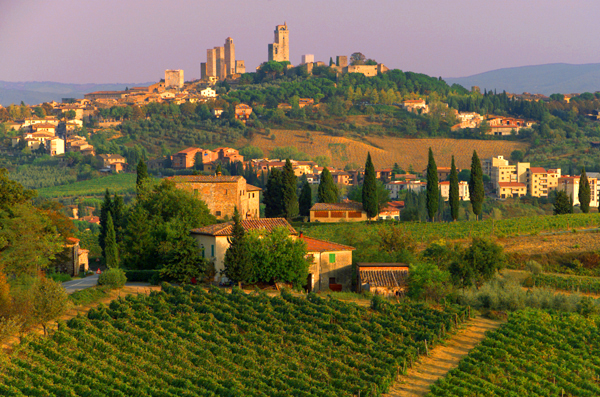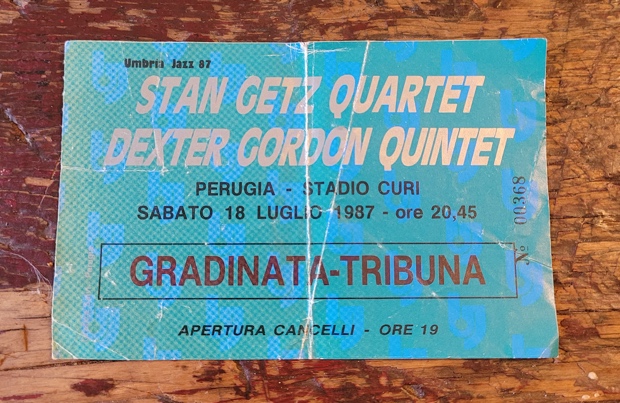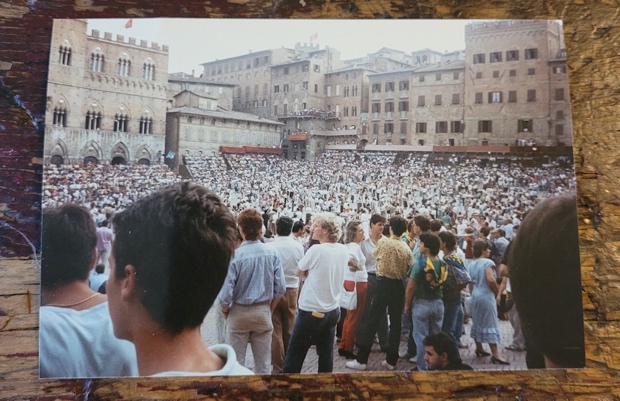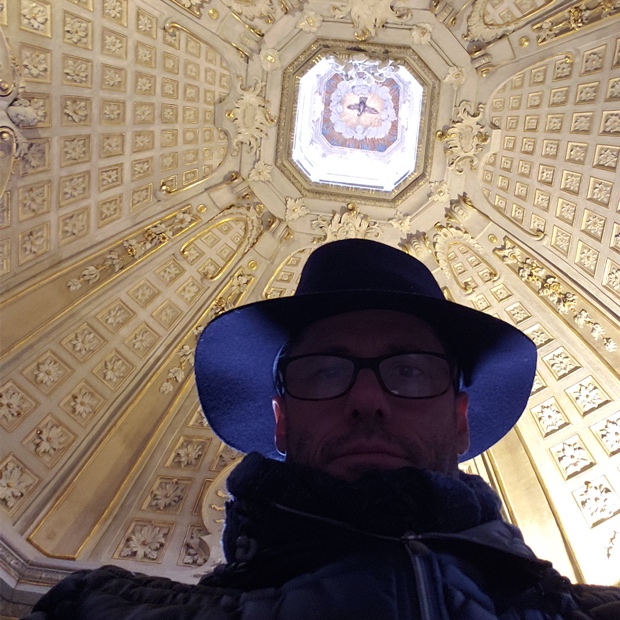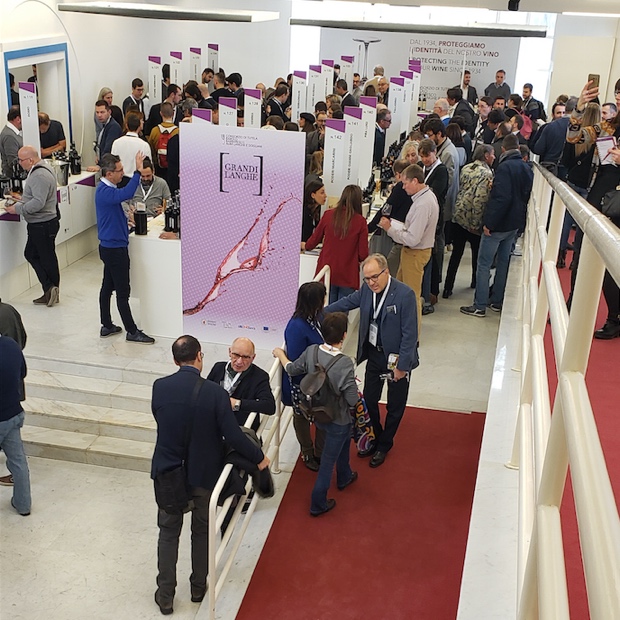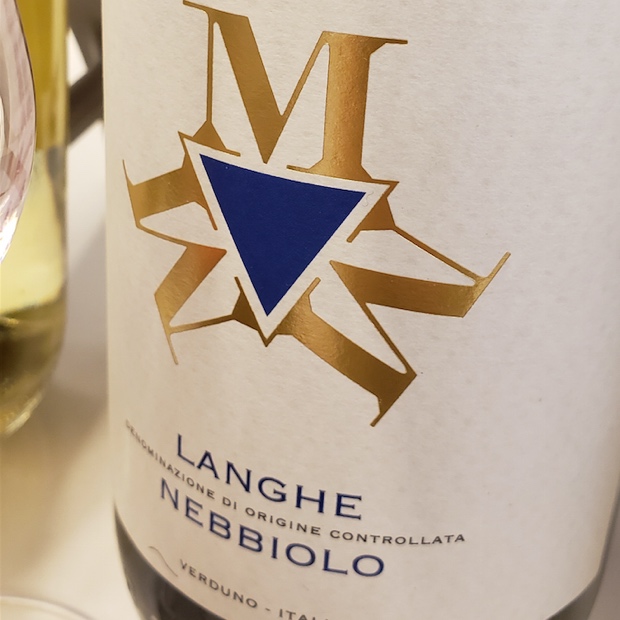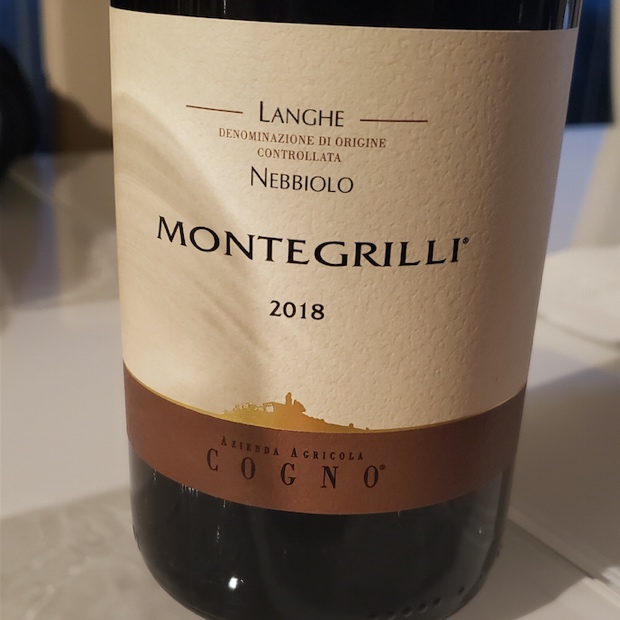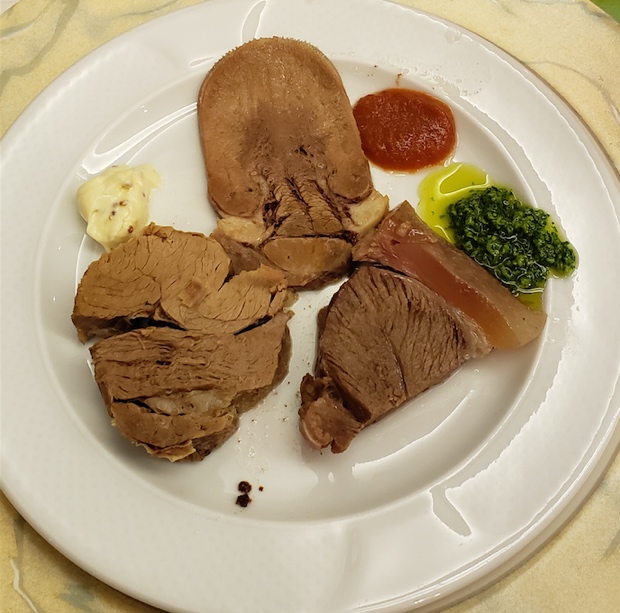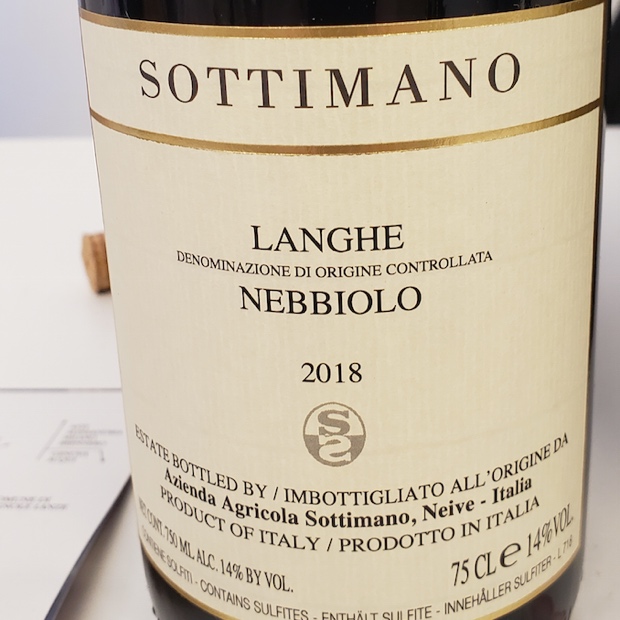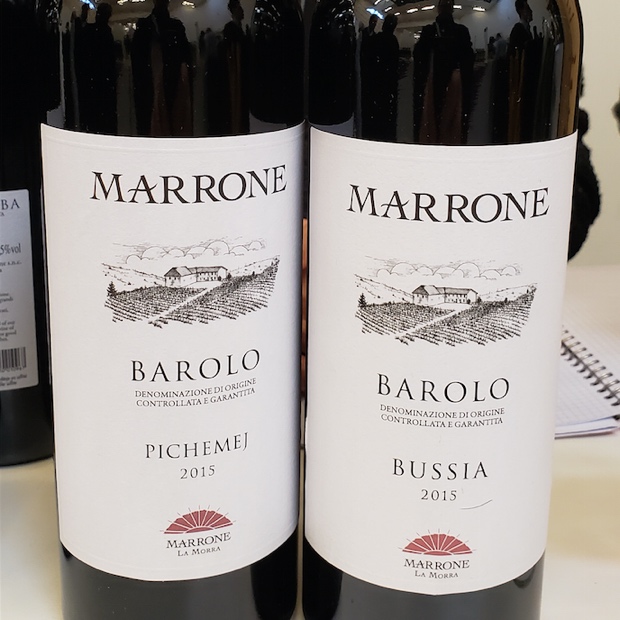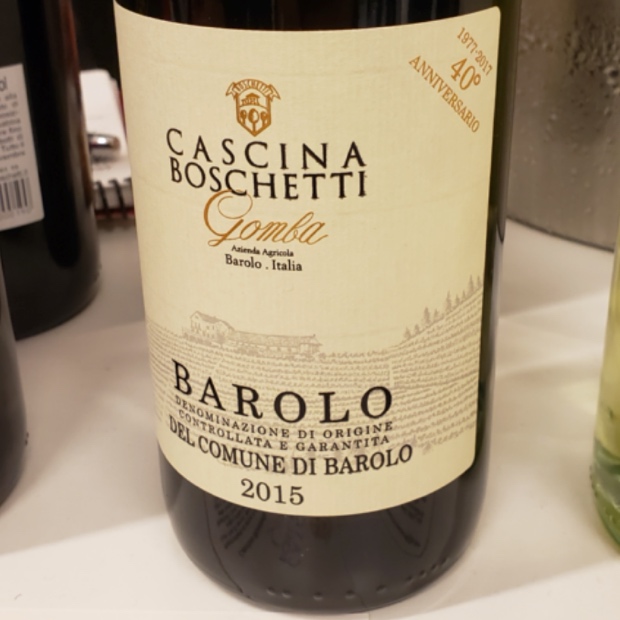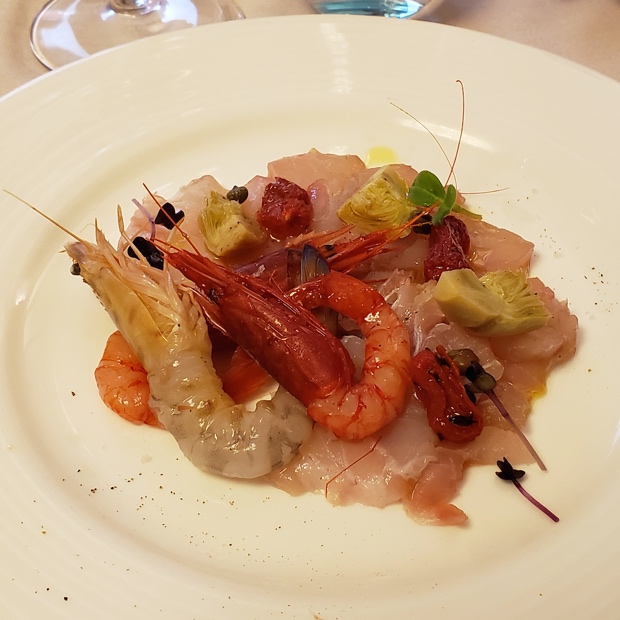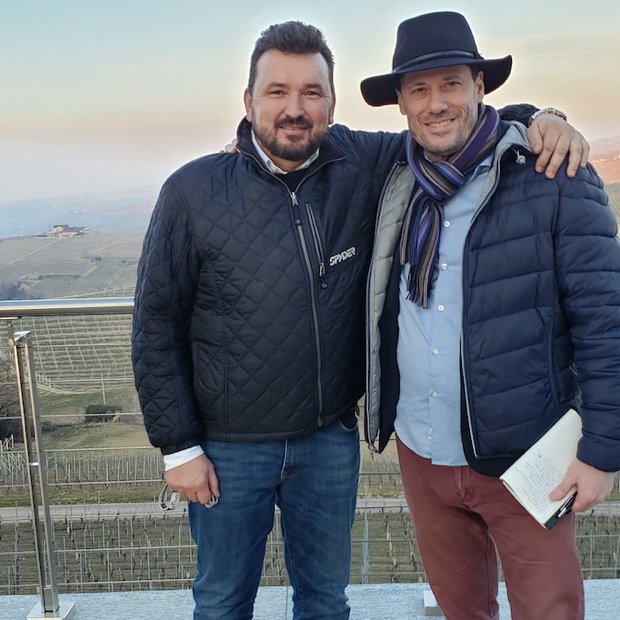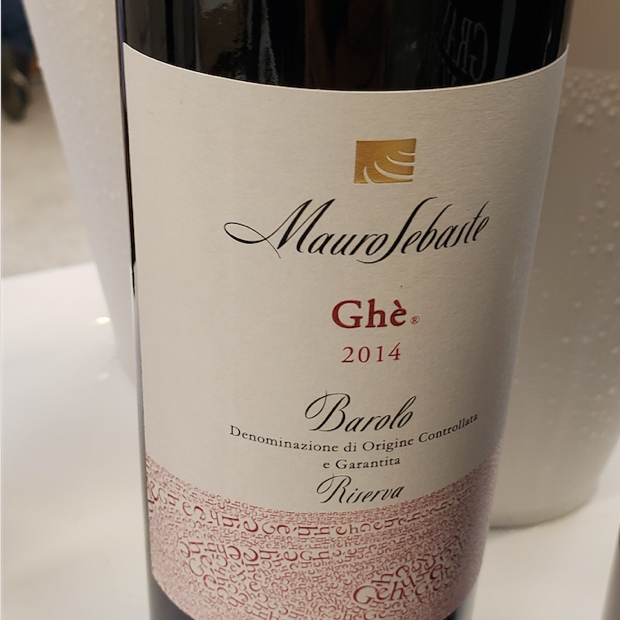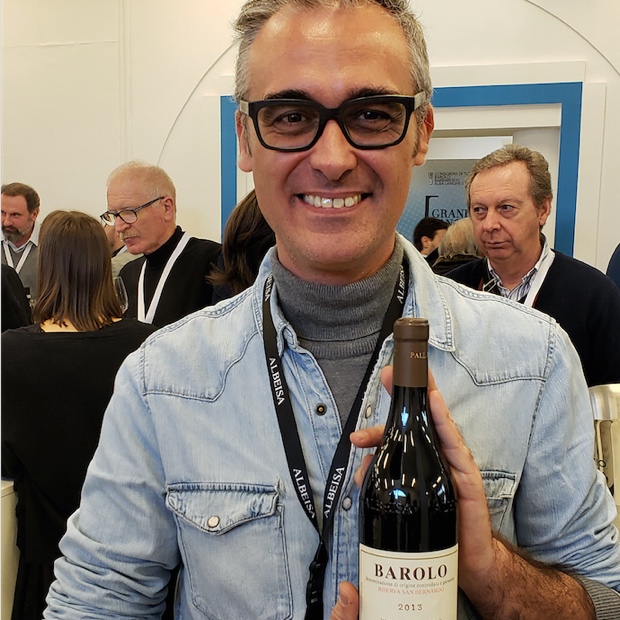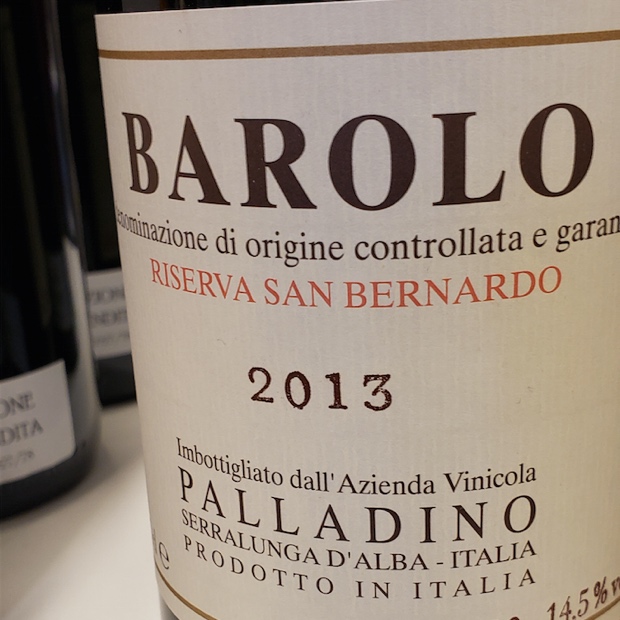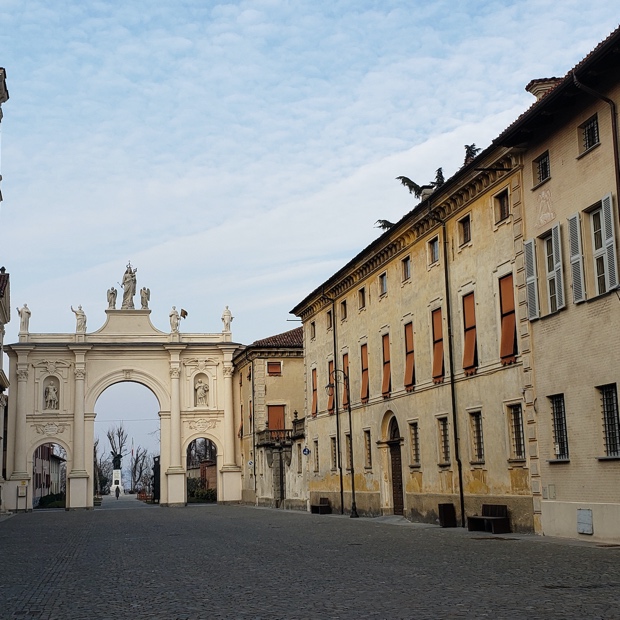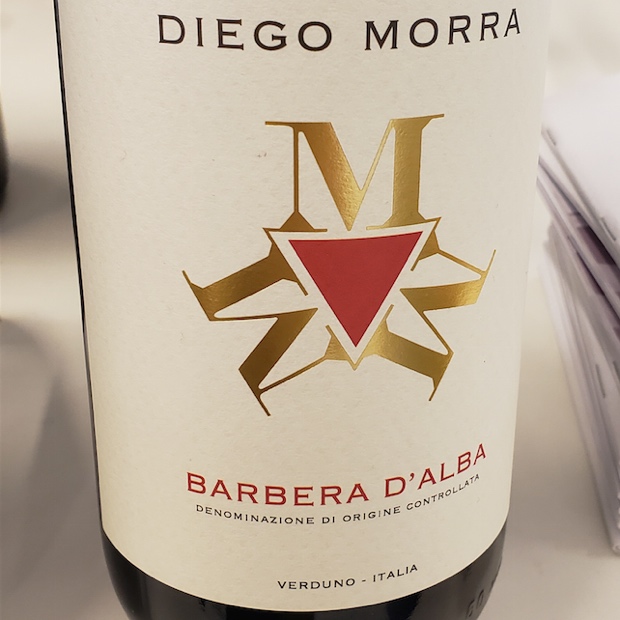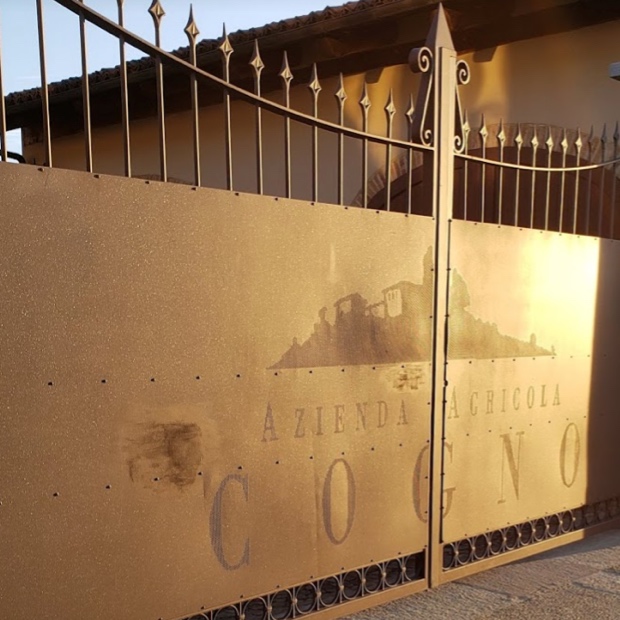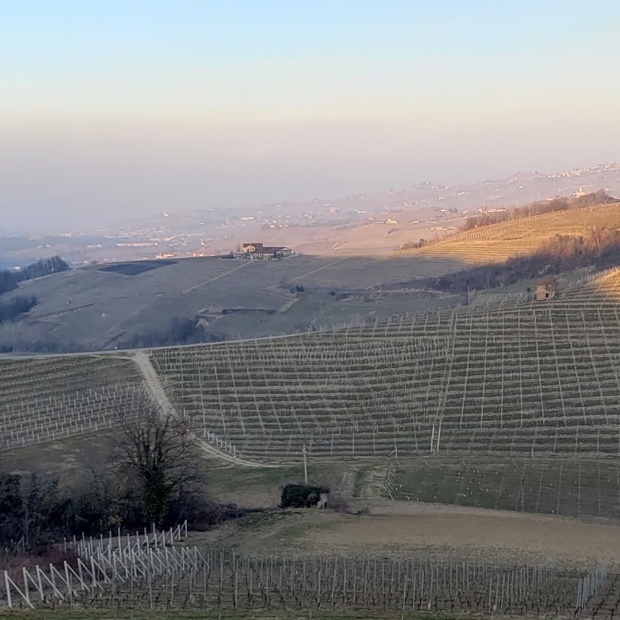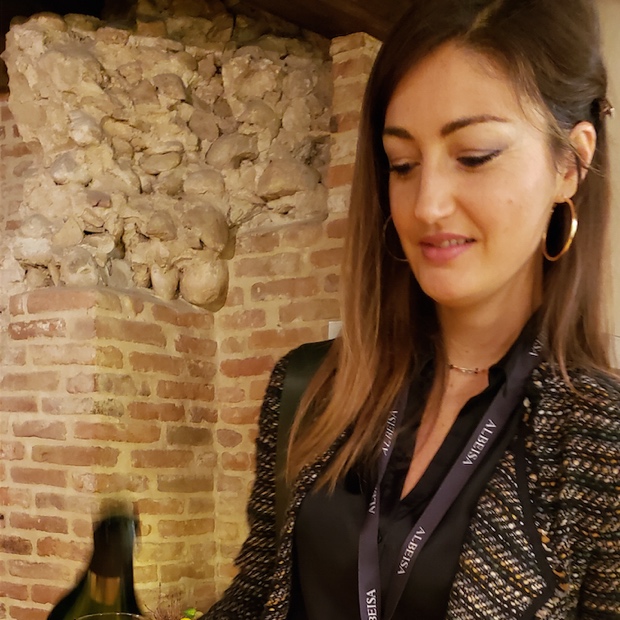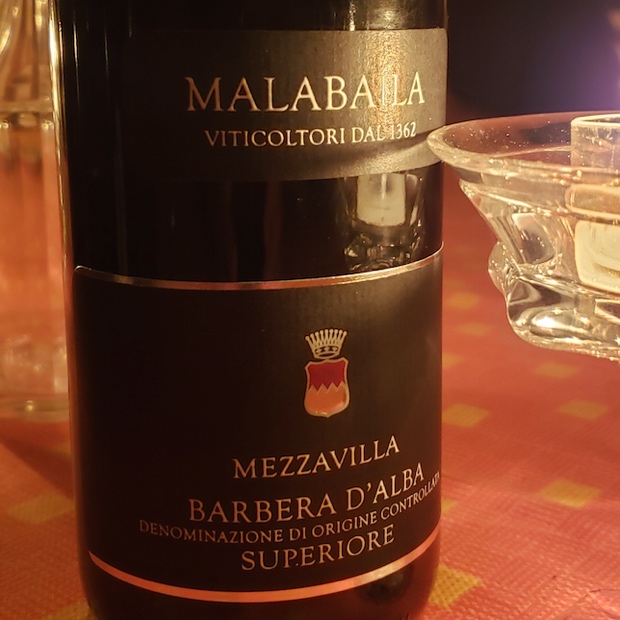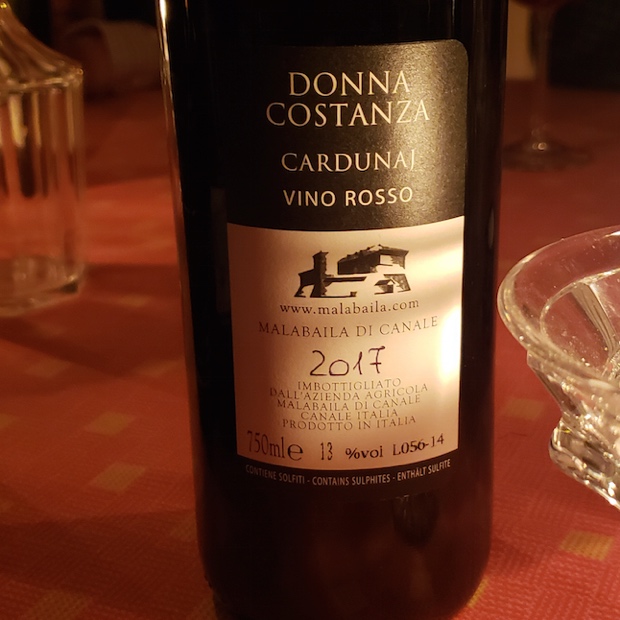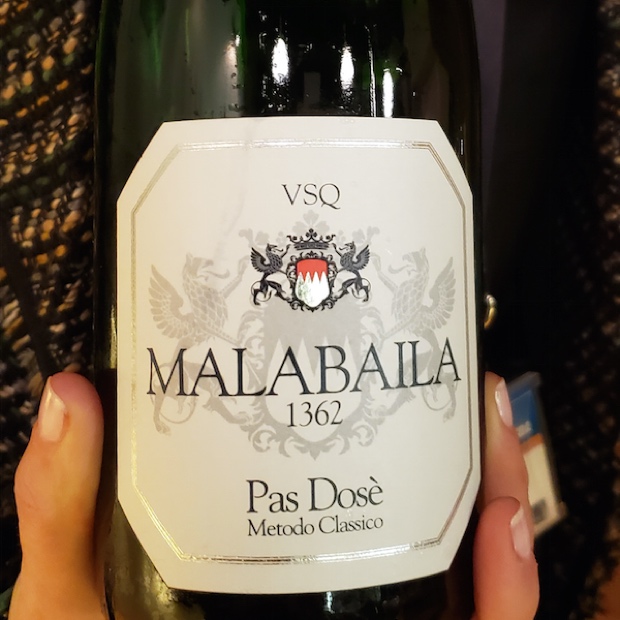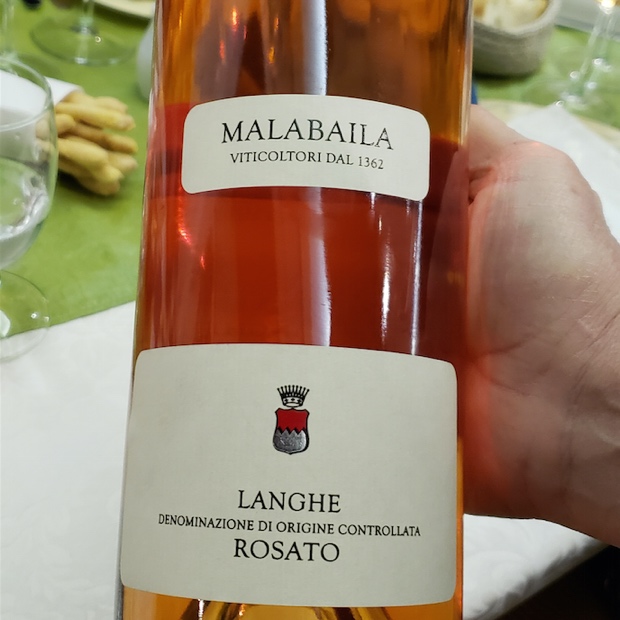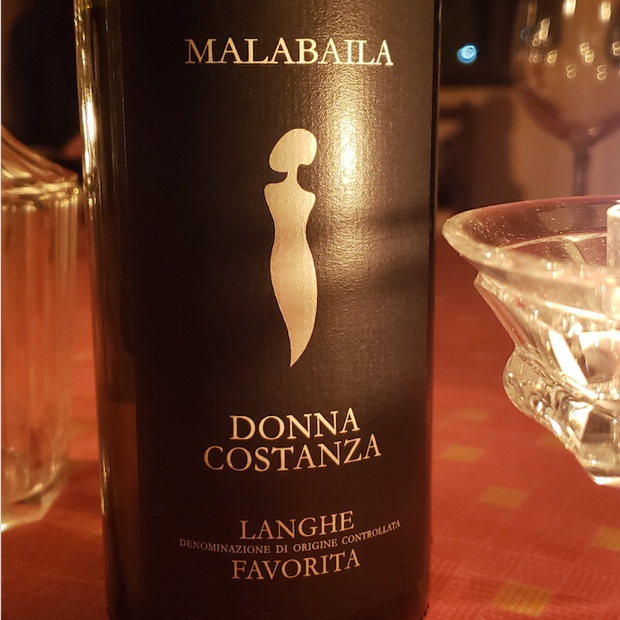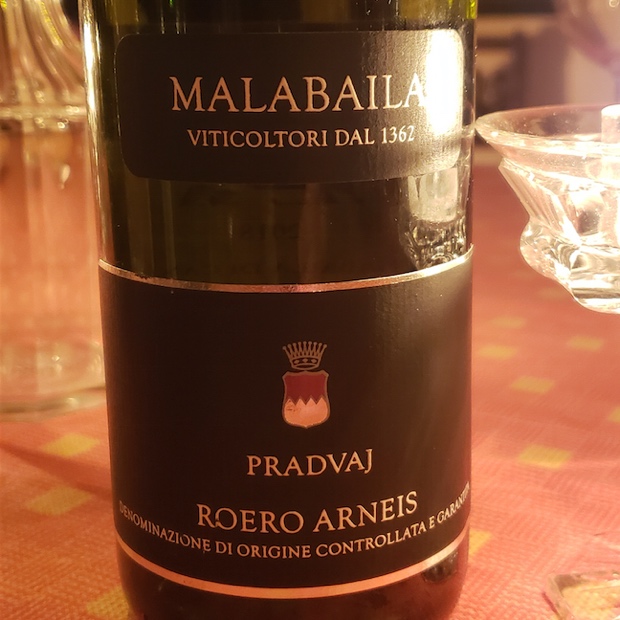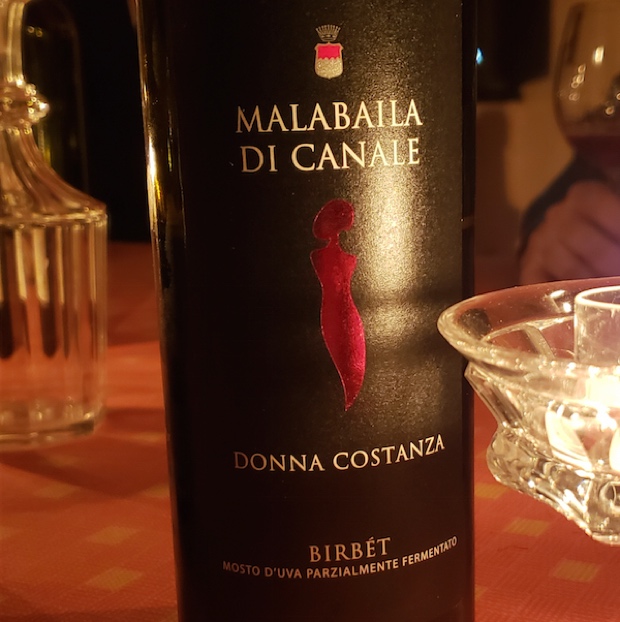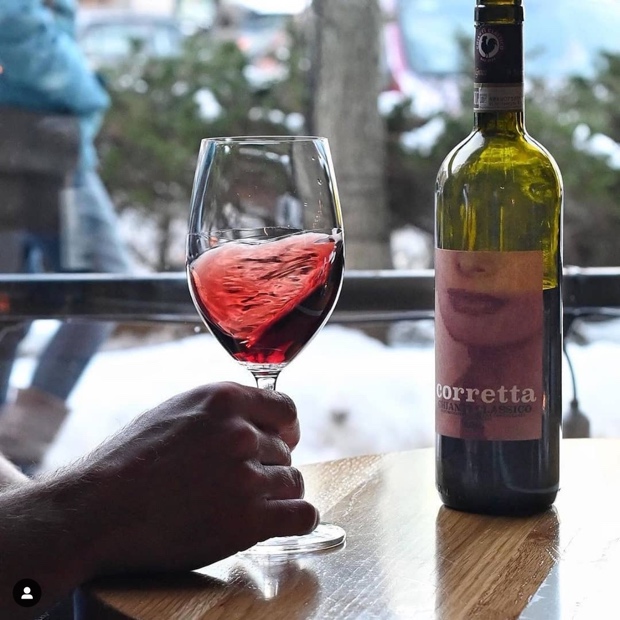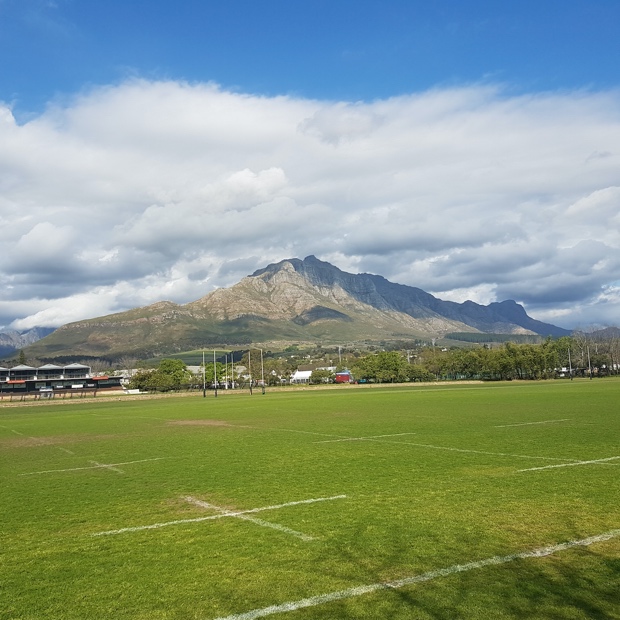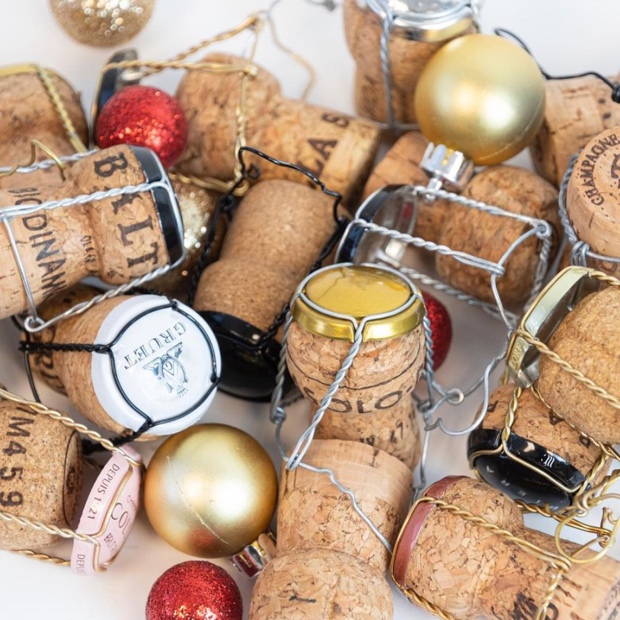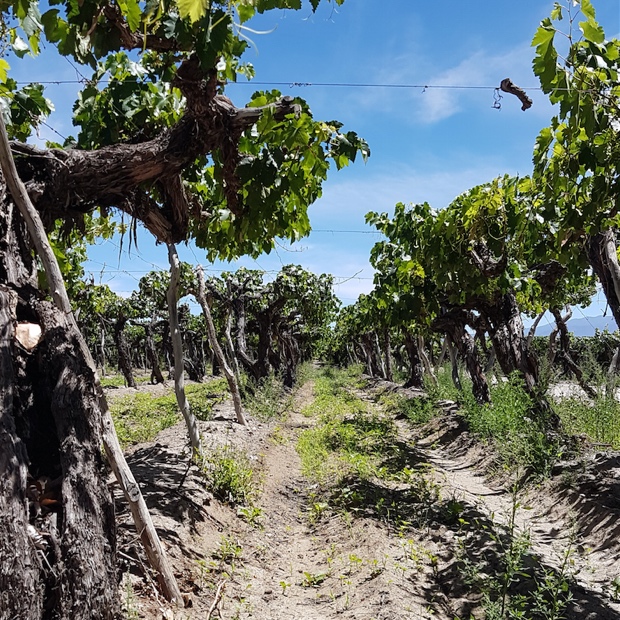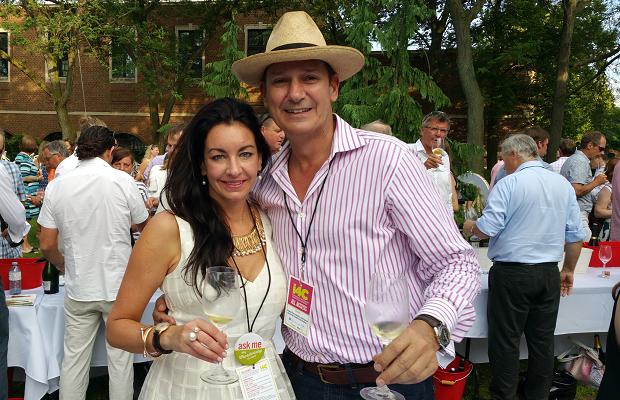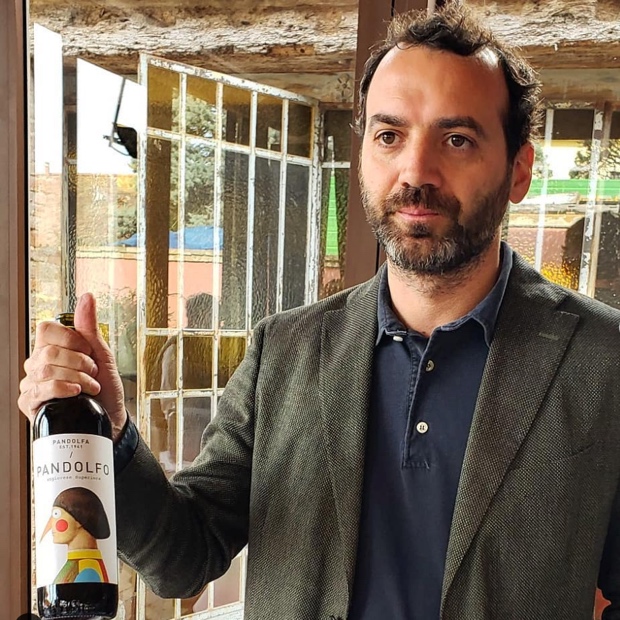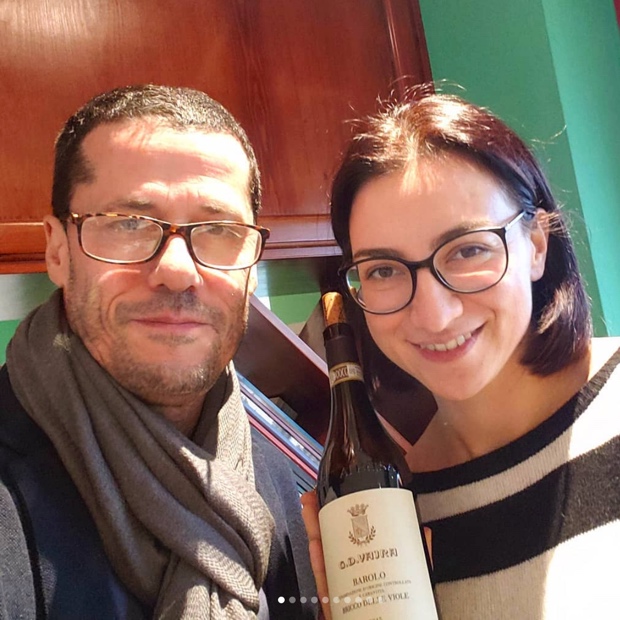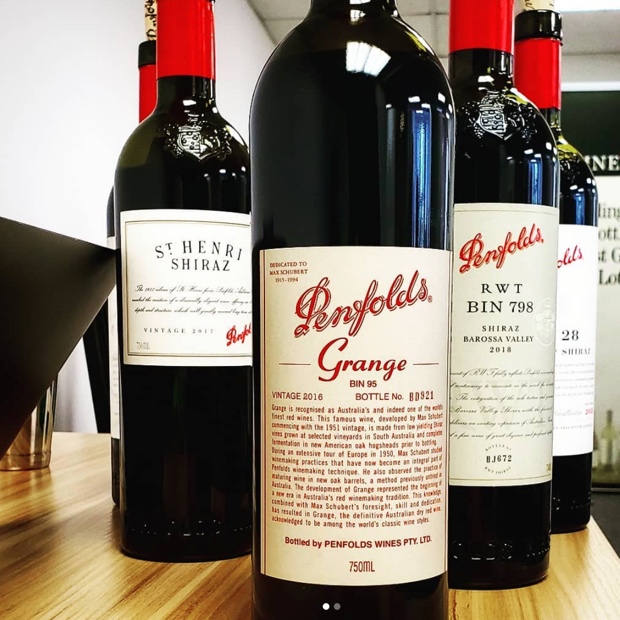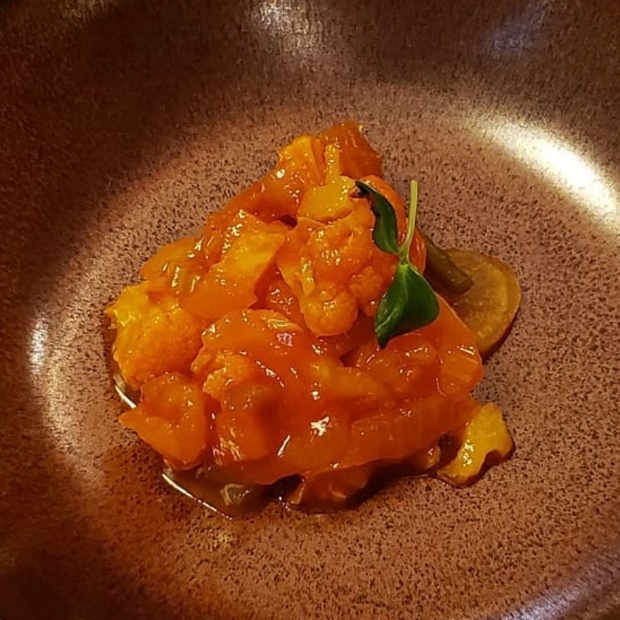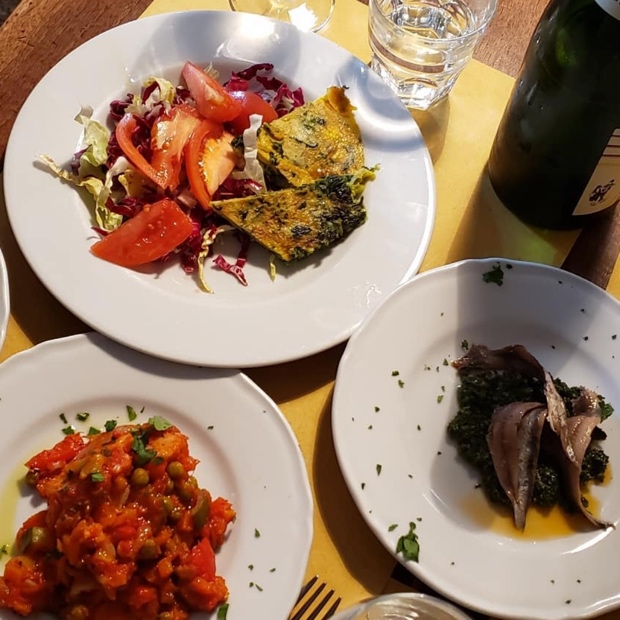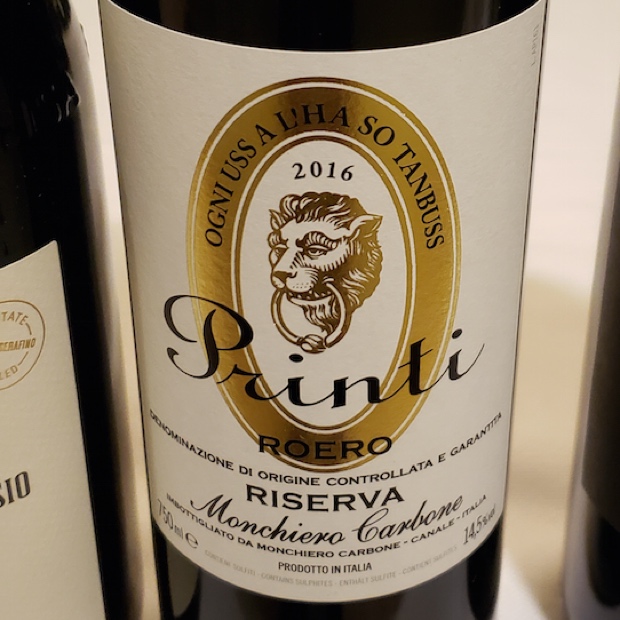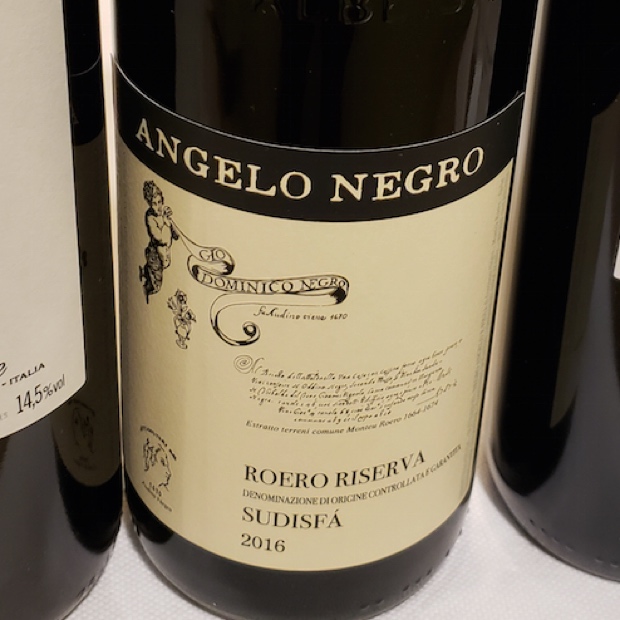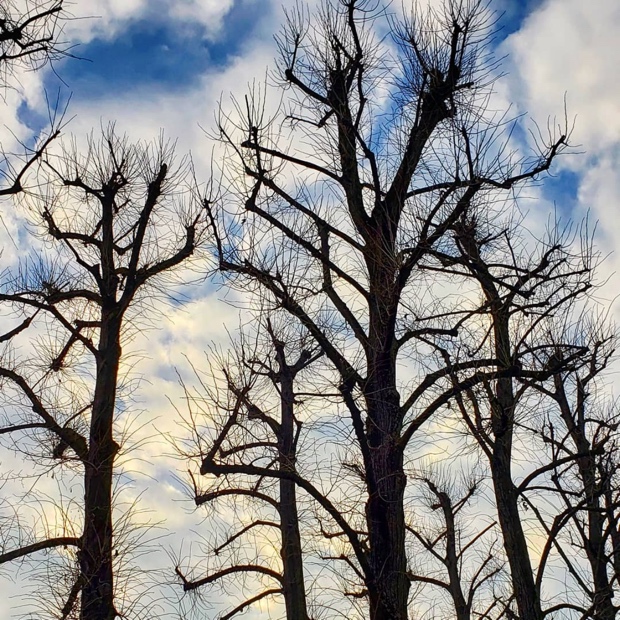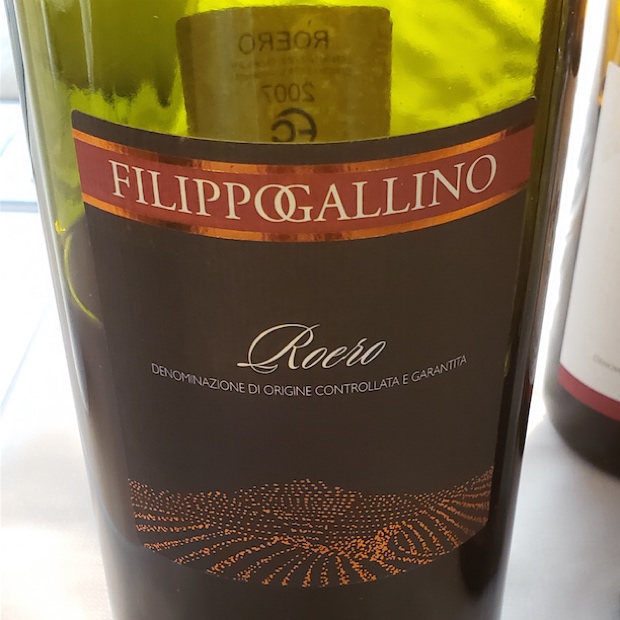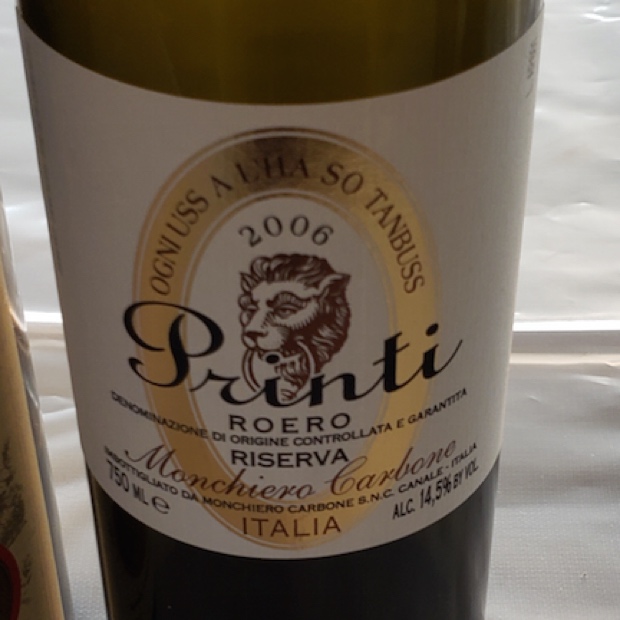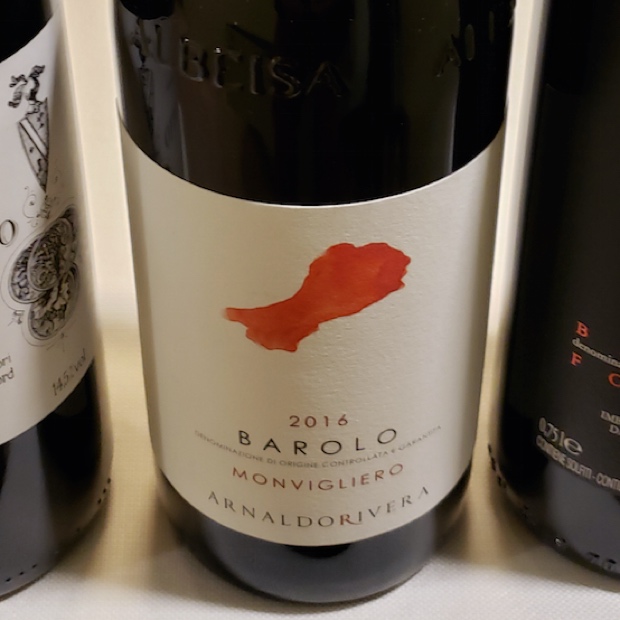In Piemonte the association of location and climate creates an effect on vines to make them Italy’s most indeterminate and so the nebbiolo of Barolo, Barbaresco and Roero are the beneficiaries of these ever oscillating variabilities. Of course there are 12 months, 52 weeks, and 365 days on the annual calendar but the question always begs. What really makes a vintage? Climate, locus, viticultural adaptation, hard work and luck. As for the messaging of 2020 Barolo, its combination of symptoms has recently been recognized, hard nosed and flexible like 2016, though the wines have got a third problem never seen before. They exhibit dexterity, in other words a fluidity of movement. No, that’s not really a problem at all and within the boundaries of a vintage it means the 2020s are arguably the most forward of the current era. Ah, that’s the crux and aye, also the rub. Nebbiolo described as scorrevole, wines of “flow,” characterized by elegance and grace. Not all mind you, but to describe a vintage there needs to be some communicated level of generalization. In summary, 2020 is a very progressive vintage.
Related – Nebbiolo Prima Previews: Barolo DOCG 2019, Barolo Riserva DOCG 2017 and Retrospectives
Yes, this is something new for nebbiolo as Barolo and so perhaps a new epoch is upon us. Time to move on from the ancient ways, to shed the Homeric, Classical Roman and Old English, get past the Early Tudor, Elizabethan, Caroline, Restoration and Augustan. Eschew the literary, abstain from the Modern, Post-Modern and Meta-Modern, ditch the cynicism, irony and climate change fears. Embrace the present, see the beauty and hope for the future. So what do we call this new era for Barolo? Well, for one thing the 2020 Barolo will follow the classic script. Act one today, act two one hour later, act three 10 years forward. So the wines have that kind of structure going for them – which is nice. But what are they called?
Related – Nebbiolo Previews: Barbaresco DOCG 2020 and Barbaresco Riserva DOCG 2018
Blind tasting adds a whole other dimension, but wines do not lie. Don’t we just feel it – when greatness is in the glass? Taste one, or several hundred examples over the course of just a few days – the learning curve is the same. There is certainty in knowing what it is to be a well-structured nebbiolo. The eponymous Barolo village lends its name though there are eleven (and their environs) that can make nebbiolo carrying the name: The others are La Morra, Monforte, Serralunga d’Alba, Castiglione Falletto, Novello, Grinzane Cavour, Verduno, Diano d’Alba, Cherasco and Roddi. These villages and their surrounding kingdoms play collective host to the profoundness of a grape married to place – forever bound, unfettered, undeterred and unbreakable. Nebbiolo and in turn Barolo are encapsulated by the soils, hills, winds and genius loci of the Langhe. Barolo owns the title of “Grand Italian Wine” and for good reason. How about a quick synopsis from village to village?
La Morra … Welcome to an open for aromatic business vintage where the Barolo of La Morra are want to be linked across a common thread of pitch and style, high in acid with a hundred different pixels of charm and grace. The red citrus vintage, especially of blood orange, fruit first and with just enough structure to see the wines go for eight to 12 years, or so.
Novello … Modern enough yet still plenty of tradition in pocket for real wines experienced in real time. At their best they are substantial, exemplary and moving. Like 2016, for many a perfect vintage, classic, without challenges, equilibrio.
Serralunga d’Alba … Substance and stature. Tighter, with dry tannins impressively woven into the tactile fabric of the wines. More of a red citrus currant to pomegranate with balsamico savoury-gariga mix than most. Subtle imagination of mineral lined within, musky skin-scented and rich without excess.
Verduno … The most reductive and closed of the 2020s with rich aromatic liqueur. High tonality specific to the village with really fine examples of ability and style.
Barolo … First maturing, most experienced, least phenolic, sound, calm and collected. Aromatically refined, optimum acidity, high austerity of tannin, taut and grippy. Commune of imagination and also fantasy, to come away at the finish firmly entrenched in true blue Barolo cru realities. Quiet yet composed, rich and powerfully restrained.
Castiglione Falletto … Peppery, spicy, seasoned, salt-licked and crispy. Predicated on acidity that can’t be immediately ignored, zesty, bursts of sunshine and savour with the feeling that ripeness is equal between fruit and acidity.
Monforte d’Alba … Split into two. Taut and stoic with aromas waiting patiently in the wings or deep and delicious red fruit aromatic profiles. Ripeness of acidity and tannins, sweetness of parts that pique interest. Bright and engaging, ripeness achieved and concentration quite ample. Major potential lays ahead.
The MGAs continue on their path towards omnipotence and in 2020 the percentage of cru-designated samples was higher than ever, with less Più comuni examples than ever before. In La Morra the MGAs include Arborina, Boiolo, Bricco Luciani, Brunate, Capalot, Casa Nere, Castagni, Cerequio, Gattera, Gianchi, La Serra, Marcenasco, Rocche dell’Annunziata, San Giacomo, Serradenari, Silio and Torriglione. Barolo’s are Albarella, Boschetti, Bricco delle Viole, Buon Padre, Cannubi, Castellero, Coste Di Vergne, Fossati, Monrobiolo Di Bussia and Sarmassa. In Castiglione Falletto there are Altenasso, Bricco Boschis, Brunella, Monprivato, Parussi, Pira, Rocche Di Castiglione, Scarrone and Villero. In Serralunga d’Alba the cru include Boscareto, Brea Vigna Ca’ Mia, Briccolina, Broglio, Cerretta, Gabutti, Gianetto, Lazzarito, Marenca, Margheria, Meriame, Ornato, Parafada, Prapò, Sorano and Vignarionda. Monforte d’Alba holds the vineyards of Bricco San Pietro, Bussia, Bussia Dardi Le Rose, Bussia Vigna Fantini, Castelletto, Castelletto Persiera, Castelletto Vigna Pressenda, Ginestra, Vigna Sorì Ginestra, Gramolere, Le Coste Di Monforte, Mosconi, Perno, Pressenda, Rocche Di Castelletto and Treturne. From Novello there are Panerole, Ravera and Sottocastello Di Novello. Verduno holds Monvigliero and San Lorenzo, Roddi is home to Bricco Ambrogio and Raviole is within Grinzane Cavour.
Year after year the opportunity to taste so many Barolo and pay visits with producers is made possible by the organization of the Consorzio Albeisa and the leadership of President Marina Marcarino. Langhe Vini are supported and valorized by the Consorzio di Tutela Barolo Barbaresco Alba Langhe e Dogliani and these tastings support the mission. Much of the Anteprima’s success is facilitated by A-B Comunicazione team of Anna Barbon, Linda Foltran and Cinzia Luxardo. This twenty eighth year of Nebbiolo Prima once again acted as the official international preview for the nebbiolo of Barolo, Barbaresco, and Roero. For the first time the tastings were held at the new offices and tasting rooms of the freshly minted event space in Alba. It was simply brilliant, comfortable, perfectly orchestrated and with the finest professional work executed by the AIS Piemonte sommeliers. There is no such thing as a successful anteprima without the sommeliers. They are professionalism and humanity incarnate, their ability to anticipate, react and service a wide range of tasters’ needs is uncanny. This group is tops, a power trio that combines knowledge, agility, and speed. I consider them as great friends and always filled with joy when I see them again.
Related – Barbaresco DOCG previews and retrospectives: 2017, Riserva 2015, 2007 and 2005
Keep in mind that not all producers participate in Nebbiolo Prima, for a myriad of reasons, including wines not yet ready to show. There are many cask samples involved and a strong argument can be made to eliminate campione for this tasting, as you will note in more than a dozen reviews below. This relevance of this report lies in the idea that it is but a snapshot, albeit of two hundred-plus wines strong provided by producers who submitted their wines. It also includes some wines tasted on site at winery visits, in particular at Bruna Grimaldi and Elvio Cogno. Then there are a couple of dozen important estates that did not participate in Nebbiolo Prima, including Elio Altare, Azelia, Ceretto, Domenico Clerico, Aldo Conterno, Giacomo Conterno, Corino, Gaja, Bruno Giacosa, Elio Grasso, Mascarello, Giuseppe Mascarello, Massolino, Alfredo Prunotto, Rivetto, Luciano Sandrone, Paolo Scavino, Mauro Veglio and Roberto Voerzio. The following are Godello’s Barolo notes from Nebbiolo Prima. There are 225 reviews in total; 190 Barolo DOCG 2020, 13 Barolo Riserva DOCG 2018, 18 Barolo DOCG 2010 and four Barolo Riserva DOCG 2008.
If you would like to view the top scoring wines from this report please click here.
Barolo DOCG 2020
Grinzane Cavour
Bruna Grimaldi Barolo DOCG Camilla 2020, Più Comuni
From five vineyards, Bozzone and Raviole (Grinzane Cavour), Roero Santa Maria and five percent each from the two single vineyards Bricco Ambrogio and Badarina. The vintage of thinner skins, high juice to pulp and skin ratios and a 2020 that you can honestly pour a glass of today because it’s just a nebbiolo of pure joy. Non aggressive tannin, sweet acidity and silky smooth texture. A truly refined Barolo and just so drinkable. Approximately 22,000 bottles produced, bottled in December 2022. Drink 2024-2028. Tasted January 2024
Diano d’Alba
Bricco Maiolica Barolo DOCG Contadin 2020, Diano d’Alba
Just the one sample from the commune of Diano d’Alba and a light affair from what will surely lead off for a charming set of 2020 Barolo. A gentle rusticity and well-seasoned fruit, salt and pepper on currants and pomegranate with a vague dusting of wood spice. Juicy and high acid with a cherry stone meets almond skin finish. Drink 2025-2028. Tasted blind at Nebbiolo Prima 2024
La Morra
Cascina del Monastero di Grasso Giuseppe Barolo DOCG Annunziata 2020, La Morra
La Morra commune, orange and red citrus, acids running high and amok, vintage typicality and as it will be seen the question is all about levels of charm, grace and balance. Some austerity but the fruit source meets quality are truly high, merging with structure and merging onto a road that leads towards excellence. The potential here is great because the tannins are sweet, long-chained and should eventually calm into that wished for state of grace. Drink 2026-2033. Tasted blind at Nebbiolo Prima 2024
Bovio Gianfranco di Bovio Alessandra Barolo DOCG Arborina 2020, La Morra
A high tonal start for nebbiolo from La Morra, a balsamic not so farfetched for the vintage that is determined by the type, pace and pitch off this Barolo’s acidity. Fruit feels darkening, a black cherry type of idea, not incongruent but taking some time to get used to when you consider the acidity’s style. Will take a few years to come together. Drink 2026-2030. Tasted blind at Nebbiolo Prima 2024
Alberto Ballarin Barolo DOCG Boiolo 2020, La Morra
Welcome to a vintage where the Barolo of La Morra are want to be linked across a common thread of pitch and style, high in acid with a hundred different pixels of charm and grace. From the rustic to the suave and this falls just right of centre with its higher tone and gentle rusticity. Like many other from the commune the acidity is of a red citrus sensation that lifts and extends the fruit for extra linger time. Not particularly tannic here so think of the near to mid term in thinking about how long to age. Drink 2025-2029. Tasted blind at Nebbiolo Prima 2024
Malvirà dei F.lli Damonte Barolo DOCG Boiolo 2020, La Morra
Some maturity in this La Morra’s fruit, well ripened and developed, nearly ready to go with a reduced balsamico that’s showing along with some vaguely peppery reduction. Tart and as mentioned the fruit evolution involved creates just a slight impression of advancement. Drink in the immediate years to come. Drink 2024-2026. Tasted blind at Nebbiolo Prima 2024
Camparo Barolo DOCG Boiolo 2020, La Morra
Cask Sample: More than youthful and in fact reductive which makes this sample feel like it has been pulled from tank or concrete rather than cask. Quite closed and immovable, yet with wholly impressive fruit substance. A sample with great potential because the tannic grains are finely chalky and the acidity running high though also expressive of great learned maturity. Drink 2027-2032. Tasted blind at Nebbiolo Prima 2024
Carlo Revello e Figli Barolo DOCG Boiolo 2020, La Morra
Lovely and charming Barolo with early accessibility and open arms, of grace and the gentlest swarthiness fully attractive and inviting. Not a salsiccia but a swirl of fruit and mineral, of modernity though because it’s so fresh and clean you also intuit the heritage in this La Morra producer’s ways. Such a pretty Barolo with seamlessness between parts, transitions smooth as silk and plenitude from start to finish. Drink 2027-2036. Tasted blind at Nebbiolo Prima 2024
Marengo Mario di Marengo Marco Barolo DOCG Brunate 2020, La Morra
A kind of reduction that’s as problematic or at least confounding as this Barolo is chock full of wealth. Tight and extremely tannic, clearly rustic but also just slightly dirty. A vinyl curtain feeling because acetic notes are strong and acidity is in total control. Time will be an ally to smooth and soften. Drink 2025-2029. Tasted blind at Nebbiolo Prima 2024
Burzi Alberto DOCG Capalot Vecchie Viti 2020, La Morra
A lighter and while not fully, also a brighter nebbiolo from La Morra. Far cry from a cru expression but rather something Villages in gather of concentration that suggests old vines. Tart and a palate intensity that defines the more important section of this wine. Full flavoured if not bodied and so solid, if not exceptional in hyperbole. Very correct and ready without obtrusive tannin. Drink 2024-2028. Tasted blind at Nebbiolo Prima 2024
Crissante Alessandria Barolo DOCG Capalot 2020, La Morra
Tart and liquid chalky, a Barolo of grip and near formidable tannin though the fruit is indeed strong enough to defend itself. Big boned and yet not what should be thought on as charming or stylish. An antediluvian style though an effective one and the sort of nebbiolo to put away for a rainy day. This won’t be anyone’s modern favourite but it will live for 20 years. Drink 2028-2040. Tasted blind at Nebbiolo Prima 2024
F.lli Casetta di Casetta Ernesto E. C. Barolo DOCG Casa Nere 2020, La Morra
High cherry fruit kind of immediacy, bursting up and out, the rest of the nebbiolo concepts waiting in the wings. Some flecking to black and then the crunch of the stone within. The mineral swath released and streaking through, the acids and tannins also rushing in and taking control. Then a sip. Botanicals, dry Amaro, tonic and bitters. A bit pressed and green. Length unexceptional. Drink 2025-2027. Tasted blind at Nebbiolo Prima 2024
Michele Chiarlo Barolo DOCG Cerequio 2020, La Morra
Blood orange of a red citrus La Morra 2020 feels that dominate the first impression of Barolo. High tones, some acetic behaviour though in check and far from unusual. Good fruit quality and substance with salt and pepper seasoning and the faintest hint of Brettanomyces. Nothing distracting and the kind of level that will be extremely appealing to older-school lovers of a specific nebbiolo style. Classic producer in every way, structure that follows suit and because the flaws are kept to the vaguest of impressions it creates this symmetry between vagaries and graces. Not the most social Barolo but it can exist with confidence in the halls of crowds. Drink 2027-2038. Tasted blind at Nebbiolo Prima 2024
Mauro Molino Barolo DOCG Conca 2020, La Morra
So, Conca is the flagship wine of the estate, already important back in 1953 and first bottled by Mauro in 1982. Conca, the amphitheatre, truly La Morrese, sandy and calcareous, two hectares split between three producers (along with Ratti and Revello) with Molino’s part being half a hectare. Close to Bricco Luciani, same hill but Conca is in the valley while BL is on top. Richest and most fruit generous but also the biggest or broadest tannic profile of them all, with spiciness, sharp acidity and far reaching potential. A little bit of everything found in the other Cru Barolo are here in Conca. You feel more wood here but also the completeness theory in action. Drink 2027-2037. Tasted March 2024
Quite the powerful entry which indicates higher alcohol but also ripeness by way of both sugar and phenolic concentration. Huge fruit, substantial and laden with pectin, glycerol and texture. Modern Barolo to be sure, a nebbiolo that’s fruit first and just enough structure to see it go for eight to 12 years or so, not likely many more than 15. If it’s well priced it will entice and exist as a great cellar defender to please a great many folks. Tasted blind at Nebbiolo Prima 2024
Poderi Marcarini di Bava Luisa & C. Barolo DOCG Barolo del Comune di La Morra 2020, La Morra
A bit if a brooder, not low and baritone but still there is a slow rumble to the fruit and acid mix. A relationship between parts on the same page in a calm and tranquil setting without any major distractions or disturbances. Quite tannic however so this shows some impressive structure and the finish actually rises up from that early settled feeling. It says that this nebbiolo is caught on a rising trajectory and should continue this way for server years before coming back down. Drink 2026-2033. Tasted blind at Nebbiolo Prima 2024
Dosio Vigneti Barolo DOCG Fossati 2020, La Morra
A bit closed, yet to open for aromatic business but like so many 2020s, especially from La Morra, the subtleties and grace should see this come about sooner rather than later. Some bitters here that do indicate some green in the tannin, nothing egregious but duly noted. Drink 2025-2028. Tasted blind at Nebbiolo Prima 2024
Carlo Revello e Figli Barolo DOCG Giachini 2020, La Morra
A most proper and definitive middle of the nebbiolo road taken for La Morra Barolo. Fresh, crisp and crunchy red fruit and that proverbial mouth full of Langhe rocks. Dusty and tannic, sweet acids a great foil to the aridity of the wine and savour in ideal pitch to square off angles and be sure to see the roundness come about after five-plus years. This is the right stuff. Drink 2027-2034. Tasted blind at Nebbiolo Prima 2024
Burzi Alberto Barolo DOCG La Serra 2020, La Morra
No other La Morra in flights totalling 25 nebbioli emit this kind of exotic scent and spicing, none at all and the singularity is more than noted. Chalky and dusty example here as well, parts wild and in flight, structure ready and willing to ground the wine when it’s done moving here, there, and everywhere. There is so much going it’s hard to track and follow but time will solve the equations. Drink 2026-2033. Tasted blind at Nebbiolo Prima 2024
Poderi Marcarini di Bava Luisa & C. Barolo DOCG La Serra 2020, La Morra
Simpler and less structured nebbiolo here from La Morra, ripe and charming, red citrus and a mild chalkiness but acidity is far more important than the tannins. Tang over tart, fruit over all else and lovely to sip. Early term Barolo without argument. Style points for purity and honesty. Drink 2024-2026. Tasted blind at Nebbiolo Prima 2024
Gian Piero Marrone Barolo DOCG Pichmej 2020, La Morra
Bigger Barolo here from La Morra while the fruit is ideally red and juicy, meeting vintage expectation and keeping up the Joneses of alcohol and structure. Neither formidable nor intense but yes there is power and grip. A graceful and gliding bird of prey using acid and tannin to grip and carry the fruit. This nebbiolo is in total control, an alpha varietal expression that will live long and prosper, not to mention enjoying a well-fed life. Drink 2027-2038. Tasted blind at Nebbiolo Prima 2024
Crissante Alessandria Barolo DOCG Barolo del Comune di La Morra 2020, La Morra
First sample TCA. Second sound. Liquid chalky and righteously structured nebbiolo, classically and charmingly La Morra, nothing overtly powerful or lithe but somewhere so comfortably in between. Richness yet elastic and poised to work its fruit, acid and tannin consecutively, with length and for good aging potential. Drink 2026-2032. Tasted blind at Nebbiolo Prima 2024
Ratti Barolo DOCG Marcenasco 2020, La Morra
A nebbiolo rising, set on a high tonal trajectory, tart and intense. High acidity, balsamic all the way through, a modicum of structure otherwise. Can’t really see much long term potential. Drink 2025-2029. Tasted blind at Nebbiolo Prima 2024
Negretti Barolo DOCG Rive 2020, La Morra
Grounded nebbiolo of great fruit swell and swath of Rothko colour but also aromatic texture. Power and grip but of a restrained and in control variety that speaks in knowable varietal terms. Very Barolo, highly worthy of cru and commune, a La Morra reality elevated and celebrated. So ideally calibrated and of a natural sweetness in perfect alignment with structure. Drink 2025-2028. Tasted blind at Nebbiolo Prima 2024
Gagliasso Mario Barolo DOCG Rocche dell’Annunziata 2020, La Morra
Light and airy, like fluffy clouds in a clear blue sky. Easy and simple nebbiolo, fruit ripe and pure enough to be considered as Barolo though not a matter of great stuffing overall. Grows in stature with flesh over time yet never really gains grip or power. Drink 2025-2028. Tasted blind at Nebbiolo Prima 2024
Rinaldi Francesco & Figli Barolo DOCG Rocche dell’Annunziata 2020, La Morra
Thin and chalky, a tannic nebbiolo without much grace or charm. Atypically or rather rustically La Morra. Drink 2026-2028. Tasted blind at Nebbiolo Prima 2024
Rocche Costamagna Barolo DOCG Rocche dell’Annunziata 2020, La Morra
Cask Sample: Closed and immovable sample, stuffing clearly hidden away but the wine is just not showing much at this time. No doubt there is a whale of fruit lurking beneath the surface but for now its just about time and seeing this Barolo spend plenty of it in bottle. Some volatility noted at the finish and also power. Drink 2026-2031. Tasted blind at Nebbiolo Prima 2024
460 Casina Bric Barolo DOCG Serradenari 2020, La Morra
Here La Morra takes off into the stratosphere and volatility runs high to say this may never come back down to earth. Clan enough outside of the VA with some fine and substantial fruit but my this is out there and so as a result kind of one dimensional for nebbiolo, La Morra and Barolo. Remains to be seen if an adjustment will happen. Drink 2026-2029. Tasted blind at Nebbiolo Prima 2024
Ratti Barolo DOCG Serradenari 2020, La Morra
Light and airy, rising towards the ethereal in a La Morra that from go is expressive of grace and charm. More than substantial fruit that not only keeps up with the flight but also shows no reaction to gravity or pressure. Ripe and luxe while never gratuitous or dense. Certainly never jammy. A fine and weightless example of Barolo with sneaky tannins and great stage presence. Top example that will unwind over 15-20 years time. Drink 2027-2039. Tasted blind at Nebbiolo Prima 2024
Dosio Vigneti Barolo DOCG Serradenari 2020, La Morra
Reductive, a bit harsh and peppery for the time being but no real concern because this is the way of some young Barolo. Crispy and crunchy with plenty of substance to carry this forward if just a bit pressed and therefore some verdancy showing through in the concentration. That cherry stone bitterness as a result and while this is substantial it will always exhibit these flavours. Drink 2026-2030. Tasted blind at Nebbiolo Prima 2024
Rizieri Barolo DOCG Silio 2020, La Morra
A true balsamic iteration of nebbiolo that veers just a bit to the acetic right. Aromatically tart, tightly wound and a bit too intense. Searing actually and drying severely at the finish. Drink 2025-2027. Tasted blind at Nebbiolo Prima 2024
Gagliasso Mario Barolo DOCG Torriglione 2020, La Morra
Rosy and ruby nebbiolo, aromatically all about fresh roses and tart red fruits in the currant to pomegranate vein. Some swarthy notes detected upon the palate, a chalkiness and a thickening of texture. Fine enough and quite correct if just a bit out of balance. Drink 2026-2029. Tasted blind at Nebbiolo Prima 2024
Novello
Le Strette Barolo DOCG Bergera Pezzole 2020, Novello
Cask Sample: Just beginning to open with sweet perfumes in the aromas though surely far way from being “there.” Very suave and chic nebbiolo, laden with glycerol, silken and cool. Not savoury mind you because the fruit not yet blooming is of a full and substantial ilk. A volatility also lurks though more cask and then bottle time should heal this very small wound. Drink 2026-2032. Tasted blind at Nebbiolo Prima 2024
Sarotto Roberto Barolo DOCG Audace 2020, Novello
Acetic, buggy, shower curtain – not clean. Good fruit however but the acids are off-putting and not on the same page. Nor are the drying tannins which finish brittle and hard. Drink 2026-2028. Tasted blind at Nebbiolo Prima 2024
Abbona di Abbona Marziano e C. Barolo DOCG Cerviano-Merli 2020, Novello
Really dirty here from Novello. It’s reduction but also wood that is very problematic. There is just no way to see this wine cleaning itself up. Ethyl acetone as well. Tasted blind at Nebbiolo Prima 2024
Le Strette Barolo DOCG Corini-Pallaretta 2020, Novello
Cask Sample: High toned and casted cask sample with the brightness of Novello captured if still too tight to be released. Chalky and truly tannic, two parts tethered together that will continue on a copacetic trajectory and eventually emerge as one. Great potential here. Drink 2027-2035. Tasted blind at Nebbiolo Prima 2024
Sarotto Barolo DOCG Briccobergera 2020, Novello
Lovely swirl of Novello nebbiolo with a meandering of fruit into circles of acidity and waves that incorporate sweet tannins through the concentrically drawn lines of this Barolo. All is fine aromatically yet the wood is overarching with as noted in the strong vanilla scent and then texture that reminds of less expensive varietal Italian wines from the Meridione south. In the end it feels artificial and forced. Drink 2025-2027. Tasted blind at Nebbiolo Prima 2024
Franco Conterno Cascina Sciulun Barolo DOCG Panerole 2020, Novello
Reductive, though subtle in this regard and so the winemaking plan seeks protection, with freshness captured and kept for a Barolo that will seek longevity. Potential is the ideal and fruit like this will help realize the goal. Plenty of wood detected yet used with purpose and the vague Bretty note is anything but a problematic distraction. Finely chiseled and crafted Novello in any case and yes this will live long and well. Drink 2026-2033. Tasted blind at Nebbiolo Prima 2024
Abrigo F.lli Barolo DOCG Ravera 2020, Novello
Power and an alcohol feel here from Novello, a grippy nebbiolo in true blue, ready to wear Barolo apparel for a lifetime of comfort. Rich and swirling, of substantial fruit and tannins equal yet acidity is more like a low machine rumble below, though it does not generate the power as much as the other parts of the wine. Still this modern example will be pleasing for those who seek and demand full-bodied (though not exclusively) Italian wines. Drink 2025-2030. Tasted blind at Nebbiolo Prima 2024
Abrigo Giovanni di Abrigo Giorgio Barolo DOCG Ravera 2020, Novello
Sweet nebbiolo is so many respects, not of sugar of course but yes in all three of its constituent parts; fruit, acid and tannin. Ducks in a row, lined up consecutively, each one turning to the next and passing it on. A modern and forward thinking Barolo, attractive and inviting, well structured and always shining bright. Really quite fine. Drink 2026-2033. Tasted blind at Nebbiolo Prima 2024
Fratteli Broccardo Barolo DOCG Ravera 2020, Novello
A push-pull, posit tug type of nebbiolo, at times bright and at others laying low, fruit full and acids richly developed. Modern enough yet still plenty of tradition in pocket for a real wine experienced in real time. Exemplary for Novello and 2020, classy Barolo and true too form. Drink 2026-2033. Tasted blind at Nebbiolo Prima 2024
Cagliero Barolo DOCG Ravera 2020, Novello
Tart mix of red citrus and wood spices for a nebbiolo that feels like a varietal masala liquified as Barolo minestra. Vegetal and spiced, tang and chalk, textural and emulsified to say the fruit and wood are just about on the same page. Give this Novello another two years and all should have properly come together. Will round out into a really nice wine without sharp angles or edginess, in the end. Drink 2026-2031. Tasted blind at Nebbiolo Prima 2024
Marengo Mauro Barolo DOCG Ravera 2020, Novello
Nothing overt but there is an edginess and a swarthy bit of behaviour in this 2020 from Novello. A nebbiolo of major fruit and also acids – but do not sleep on the crunchy tannins. This is true Barolo of volatile behaviour, ancient and incarnate with cask in full control for old school behaviour and style. Needs several years to integrate, settle and find the other side. Patience required, with prejudice and should you be in a hurry there will be some disappointment. Drink 2027-2035. Tasted blind at Nebbiolo Prima 2024
Vietti Barolo DOCG Ravera 2020, Novello
Plenty of stuffing from this qualitatively brilliant Novello Barolo, substantial, exemplary and moving. Grooving as well, a buzz of acidity in surround of fruit and true significance structural speaking. Cru capture of great distinction from within Novello, lots of wood yes but good and clean barrel accents and effects. Really well-seasoned and the potential here is truly great. Drink 2026-2035. Tasted blind at Nebbiolo Prima 2024
Piazzo comm. Armando di Piazzo Marina Barolo DOCG Sottocastello di Novello 2020, Novello
High tones acceding the acetic so beware of the power and potentially problematic actions of this Barolo. It’s silken and the fruit is of high quality but insights into its behaviour look at acids edgy and out of a certain level of control. The palate shows more stability but the finish is drying and clearly abrupt. Drink 2026-2028. Tasted blind at Nebbiolo Prima 2024
Elvio Cogno Barolo DOCG Cascina Nuova 2020, Novello
“Like 2016,” insists Walter Fissore, “2020 was a perfect vintage.” Classic, without challenges, equilibrio. A dusty quality and a broad brushstroke of Novello nebbiolo, the youngest and most impressionable fruit, easier by Cogno standards so that it can be consumed earlier and defend the Ravera Baroli from having their youth stolen from them. Here a Barolo that rolls from sweet natural fruit through Amaro and into brushy savour before returning right back to the beginning. The Ravera are linear while Cascina Nuova turns continuously on an axis and walks the circumference of a circle. Drink 2025-2032. Tasted January 2024
Elvio Cogno Barolo DOCG Ravera 2020, Novello
One of three Cogno expressions from the Ravera MGA in Novello, here the most broad while the other two are single vineyard expressions. All things being relative and equal the term broad means less both for these estate wines and also as compared to the Cascina Nuova label. Great richness meets both salinity, followed by sapidity through Ravera, yes it’s true, first one and then the other. They layer for what feels like a slow release of emotion and so Ravera comes at the palate in wave after wave. The warmer the vintage the more whole bunch function and so in 2020 the number was approximately 50 percent. Think about that. For MGA Barolo. Drink 2026-2037. Tasted January 2024
Elvio Cogno Barolo DOCG Ravera Bricco Pernice 2019, Novello
The hill within the hill, Bricco Pernice upon Ravera, isolated, insulated and encapsulated for nebbiolo of an insular and implosive intensity that’s likely unparalleled anywhere else in Novello. Closed and not because of vintage but due to time and really that’s about it A broad shouldered and muscular nebbiolo that must be given as much bottle time as it spent in cask, or double that for even better results. That means check back in 2026 or later to see if any part of the tannins have unfolded, unfurled or stretched out for some exercise. Likely not but then some parts will finally have as the decade unwinds. Also it’s normal in January for Pernice to be tight and a bit closed. Oh, by the way this was made with 100 PERCENT WHOLE BUNCH NEBBIOLO. For Barolo. Single vineyard Barolo from a storied MGA. Walter’s mid-life crisis begins right here and it’s glorious. Drink 2029-2045. Tasted January 2024
Elvio Cogno Barolo Riserva DOCG Ravera Vigna Elena 2018, Novello
For some producers this would already be a retrospective look back at a special single vineyard Barolo but for Elvio Cogno it’s as young a nebbiolo as there is and may as well not yet be released. Only in bottle one year, a true Riserva for Barolo in a world where there just aren’t many left. Elena is made with clones that need more time to resolve their nebbiolo tannins because the body of the fruit they accompany is not as big and fleshy as other clonal examples. Lumpia and Rose, needing coddling and oxygenation, repeated in a wine like Elena that must be aired and agitated to get into a charming state of grace. It will provided you pay attention and exercise patience. Not a big wine but a stubborn one. Drink 2028-2040. Tasted January 2024
Più comuni
Francone di Francone Fabrizio e C. Barolo DOCG 2020, Più comuni
Some dirty barrel noted off the top, coming across with reduction and varnish. A bit too problematic to see the nebbiolo roses and bright rises of this multi-commune Barolo. Drink 2025-2027. Tasted blind at Nebbiolo Prima 2024
Gheddo di Pippia Giovanni Barolo DOCG 2020, Più comuni
Some dirty barrel noted off the top, coming across with reduction and varnish. A bit too problematic to see the nebbiolo roses and bright rises of this multi-commune Barolo. Drink 2025-2027. Tasted blind at Nebbiolo Prima 2024
Marengo Mauro Barolo DOCG ‘Angela’ 2020, Più comuni
A nebbiolo of more than one commune and so what resides as multi-village level should find its balance in the variegation of fruit, terroirs and multi-climatic layering. As far as things go this 2020 Barolo does this variegation quite well with nothing out of sorts or line and with fruit quality as fine and proper as one could want from the vintage. Chew, ropiness and tang, like liquorice and sweet acids, quite balsamic but never too tart. Good medium bodied ay this level of an example. Drink 2025-2029. Tasted blind at Nebbiolo Prima 2024
Pio Cesare Barolo DOCG ‘Pio’ 2020, Più comuni
Not the lightest iteration of a Più comuni Barolo but nor is this one of grip and power. A hit of reduction and so well protected, of moderate structure to see a nebbiolo that should also carry forward while always developing and protracted. Really solid effort here, well made and drying in a most proper Barolo way. Drink 2026-2029. Tasted blind at Nebbiolo Prima 2024
Poderi Fogliati Barolo DOCG Treturne 2020, Più comuni
This is one of several Più comuni Barolo with yet another reason to see 2020 as a charming nebbiolo vintage working strong for the people because these “general” iterations are almost all well designed. Fortified and balanced. Its an impressive group of wines and tells us that the vintage is a great buy with very few blips or slips. In fact this ’20 is a cut above the rest with natural sweetness, substance and length. Barolo reality captured. Drink 2026-2032. Tasted blind at Nebbiolo Prima 2024
Viberti Giovanni Barolo DOCG Buon Padre 2020, Più comuni
One of the more reductive Baroli as a product and factor of Più comuni yet still within reason and one to see as a protected nebbiolo to age in the mid term. The bones are strong and the flesh hanging well, if taut and close to the skeletal structure of the wine. Well made and actually quite modern for the idiom. Drink 2025-2029. Tasted blind at Nebbiolo Prima 2024
Vigneti Luigi Oddero e Figli Barolo DOCG 2020, Più comuni
A far as Più comuni Barolo is concerned this exists on the less forthright and fresh side of the spectrum, though still as a nebbiolo that speaks in correct varietal terms. It’s a light one but not exactly bright or pretty in any real shape or form. Tart and full of tang, low-level structure and best serviced for the short term. Drink 2025-2027. Tasted blind at Nebbiolo Prima 2024
Vite Colte Barolo DOCG Paesi Tuoi 2020, Più comuni
Ever so noticeably reductive, a bit brooding and quite glycerin textured for Più comuni nebbiolo as Barolo. Laden with pectin, jammy on the nose, tannic and austere to finish. Some disparate parts here, a bit out of sorts though time will help. Feels just a bit professional and larger production in style for normale Barolo. Drink 2026-2029. Tasted blind at Nebbiolo Prima 2024
Roddi
Grimaldi Bruna Barolo DOCG Bricco Ambrogio 2020, Roddi
From the MGA split amongst a half dozen producers, the largest of which is farmed by Paolo Scavino. Bruna Grimaldi owns two plots, one planted on a north-south axis that is blended into the Classico. The other is always made as a single vineyard wine, a sunny place with top exposition and the delivery here of a horizontal expression, juicy and forthright. First vintage with fermentation in open top fermenters that helps to broaden and round out the tannins and earlier whereas stainless steel kept them much tighter. More forward three years to now (though the wood aromas are still quite strong) to find a Barolo of breadth and depth but also one you could very much consider to open and enjoy. Charming, a naturally sweet expression, so generous and arguably one of the cleanest nebbiolo around. Drink 2025-2032. Last tasted January 2024
On the Roddi again for 2020 Barolo in the reductive style with an example showing that true crunchy red shell encasing same ilk fruit equipped with plenty of tang. A piquancy here that’s held tight within itself so that time can be the factor for a fleshing out and away. A bit too much wood this early (to no shock) because the silkiness of texture is chock full of vanilla, lavender and liquid spice. Tasted blind at Nebbiolo Prima 2024
Lodali Walter Barolo DOCG Bricco Ambrogio Lorens 2020, Roddi
Fine Roddi example of Barolo noted straight off the top, reserved and restrained but expressive behind the veil. Pull that organza curtain aside to reveal high quality fruit sweetness and acids to match. A march of complimentary parts into tannic walls yet malleable, intricately woven and true willing participants. A suave nebbiolo of class and if just a bit too much barrel that is also something that will eventually melt in and eventuate into truffled secondary style. Drink 2027-2034. Tasted blind at Nebbiolo Prima 2024
Negretti Barolo DOCG Bricco Ambrogio 2020, Roddi
Truly rich elixir of Roddi nebbiolo with that jammy pectin aromatic feel followed by no schism to casually replay upon the palate. Lots of wood here in a modern stylish and truly tannic Barolo. This will be enjoyed by many fans of this very effective style. Cordero comes to mind. Drink 2027-2037. Tasted blind at Nebbiolo Prima 2024
Serralunga d’Alba
Bruna Grimaldi Barolo DOCG Badarina 2020, Serralunga d’Alba
Many will recognize Badarina as the cru where Bersano owns the largest part because Martina Grimaldi’s grandparents sold much of it to Arturo Bersano back in the 1960s. A stiffer and more vertical Barolo, certainly as compared to Bricco Ambrogio but still these 2020s from Bruna Grimaldi are all generous gifts of nebbiolo. There is just something in the way they move and so neither reduction nor austerity are part of their make-up. Freshness and a crunchy fruit base are mixed with expertly managed acidity, tannin and wood to put this in harmony, for now and 10-plus years at the very minimum. Drink 2025-2036. Last tasted January 2024
First of the Serralunga d’Alba nebbiolo and one to speak in raw dough meets pulpy red fruit ways. This bottle tasted blind is not the most perfect with a level of reduction that will dissipate and improve but there is some other distracting material involved. Suppresses the tannins and quickens the finish. Tasted blind at Nebbiolo Prima 2024
Bruna Grimaldi Barolo DOCG Badarina Vigna Regnola 2020, Serralunga d’Alba
Just over 1,000 bottles are produced of this single block Barolo located within the larger MGA of Badarina, an amphitheatre facing full south right in the heart within the larger southeast by southwest vineyard. The section of the vineyard that has always been planted to nebbiolo, going back to Martina Fiorino’s grandmother’s time in the 1960s, even when ripeness would have been suspect in some vintages. Now only made in the best vintages, previously as Riserva in 2016, 2013, 2012, 2011, 2010 and 2009. The change of labelling laws means no longer using Riserva, switching to Albeisa bottles with this 2020 and dio mio man is this a completely singular expression, especially the combination of closed aromatics, juicy acidity that attacks the side of the palate and an intensity all of its own accord. The finish is firm, tense and nervous. Very special Barolo. Tasted January 2024
Cascina Adelaide Barolo DOCG Baudana 2020, Serralunga d’Alba
Taut and not yet gregariously aromatic but sometimes you just feel the Serralunga d’Alba potential ahead of the early stages and behind the veil. The fruit is surely substantial and ripe without gratuity, neither in glycerin nor by simple syrup acidity. Fulsome Barolo in so many respects with really fine-grains of tannins keeping things linear, moving and real. The future will help to define this nebbiolo’s set of strengths. Drink 2027-2036. Tasted blind at Nebbiolo Prima 2024.
Brovia Barolo DOCG Brea Vigna Ca’ Mia 2020, Serralunga d’Alba
Simple and highly effective nebbiolo here from Serralunga d’Alba, tart though not too intense, direct yet far from vivid. Good quality fruit under the cover of ever so slight reduction and a liquid white pepperiness that adds a buzz of energy to the structural mix. The wood is a bit on top but not far from dropping down below. Good wine, very correct and quite satisfying. Drink 2026-2030. Tasted blind at Nebbiolo Prima 2024
Batasiolo Barolo DOCG Briccolina 2020, Serralunga d’Alba
Cask Sample: Intensity of many parts, none of them fully out in the open or yet known. A cask sample of strength and yet some maturity in evolution is sensed. Or experience rather, of powerful restraint, quality fruit ripeness and development, then finally structure. The acids are great and the tannins thick as thieves while the wood still whips the entirety of the entity into shape. This could have been a train wreck but it instead is on the way to excellence. Drink 2027-2034. Tasted blind at Nebbiolo Prima 2024
Tenuta Cucco Barolo DOCG Cerrati, Serralunga d’Alba
High fructose, pectin and glycerol example of nebbiolo for Barolo that once again shows how warm and developed Serralunga d’Alba fruit can be. You will not find these levels from Roddi, Novello or La Morra, that much is clear. This is luxe and substantial, with acids and tannins equal, opposing and ready for the game. Lights, camera, action, in a few years. Drink 2027-2037. Tasted blind at Nebbiolo Prima 2024
Giovanni Rosso di Rosso Davide Barolo DOCG Cerretta 2020, Serralunga d’Alba
Cask Sample: A sample yet a mature one – this is quite advanced for a Barolo not yet committed to bottle. Happens sometimes when samples are pulled. They can oxidize and not show the true value and potential of what will be the final blended wine. This is such a moment. Tasted blind at Nebbiolo Prima 2024
G.D. Vajra di Vaira Aldo Barolo DOCG Cerretta 2020, Serralunga d’Alba
Fine showing from the start for this nebbiolo out of Serralunga d’Alba with ripeness and really expressive fruit. Just that right mix of tart, tang and natural sweetness for acids to get with, support and extend. It’s all here, available and on display for Barolo of substance and stature. The tannins dry but they are impressively woven into the tactile fabric of this wine. You can really sink your teeth into this one and should be able to continue doing so for a decade and a half more time. Drink 2027-2037. Tasted blind at Nebbiolo Prima 2024
Bugia Nen di Davide Fregonese Barolo DOCG Cerretta 2020, Serralunga d’Alba
A reduction and while a stronger one than some it’s nothing that can’t be seen as soon to blow away. Some savour here, somewhat unusual for the vintage because 2020, especially from Serralunga d’Alba makes for anything but verdant, brushy and dried herbal Barolo. And then the animale comes – Brettnomyces that’s more than horse hair but reminding of the barn’s floor. This is problematic. Tasted blind at Nebbiolo Prima 2024
Garesio Barolo DOCG Cerretta 2020, Serralunga d’Alba
Fine aromatic presence here from Serralunga d’Alba, an energy of fruit and acidity together with more of a red citrus currant-pomegranate-balsamic mix than most. More like La Morra in this sense but nebbiolo are snowflakes, anything can happen and open-mindedness is key. The palate is chewy and equally vibrant, the tannins sweet and tightly assembled, the chains intact and the tact of this wine lies in its balanced attack. Hyper real, focused and generous to a degree of restraint. Drink 2026-2033. Tasted blind at Nebbiolo Prima 2024
Schiavenza di Pira Luciano Barolo DOCG Cerretta 2020, Serralunga d’Alba
Reductive and an aromatic mix of tomato plant, fruit, iodine, plasma and band-aid. Another savoury Serralunga d’Alba though there are not many of them and this is the sort that imagines rosemary, fennel and tarragon. Complex and very woody, a bit stemmy and yet time will heal, bind and bring together all parts. Drink 2026-2030. Tasted blind at Nebbiolo Prima 2024
Alessandro Rivetto Barolo DOCG Del Comune di Serralunga d’Alba 2020, Serralunga d’Alba
Cask Sample: Yet another cask sample that’s surely oxidized. One has to question why producers send these in. Nothing to go on as to the what, where and why of the wine. Tasted blind at Nebbiolo Prima 2024
Negro Angelo & Figli di Giovanni Negro Barolo DOCG Del Comune di Serralunga d’Alba 2020, Serralunga d’Alba
Fine and restrained nebbiolo, good quality Serralunga d’Alba fruit, acids equal to the task, supportive and lively. Neither wood nor tannin are overt but there is spice and grip if more so piquancy to this Barolo. Mid-term ager, best in a year and for four to six more. Drink 2025-2030. Tasted blind at Nebbiolo Prima 2024
Enrico Serafino Barolo DOCG Del Comune di Serralunga d’Alba 2020, Serralunga d’Alba
Lovely nebbiolo for Serralunga d’Alba, a swirl of ripe red fruit and the subtle imagination of mineral lined within. A potency but not a powerful push of anything in particular and a Barolo of admirable restraint. Liquid chalky, far from dusty, hinting at but never really lashing out as herbal balsamic, a challenge for the palate but a good one, physical and healthy. Balanced and well paced, long and true. Drink 2026-2034. Tasted blind at Nebbiolo Prima 2024
Schiavenza di Pira Luciano Barolo DOCG Del Comune di Serralunga d’Alba 2020, Serralunga d’Alba
Taut surely and vaguely reductive while fruit is of high quality and comes across purposed, trenchant and fine. Some of that swarthy nebbiolo volatility, more from the wood than anything else and just a bit distracting. Still there is some charm and the wine will find its moments to shine. Drink 2026-2029. Tasted blind at Nebbiolo Prima 2024
Tenuta Cucco Barolo DOCG Del Comune di Serralunga d’Alba 2020, Serralunga d’Alba
True blood orange example of Serralunga d’Alba nebbiolo, more like La Morra in that sense but the depth of fruit and texture are all of this commune. Well paced and structured Barolo to be sure, one, two, three, tick, tick, tick, rhythmic and metronomic. A chewy quality, chocolate from the wood, a fine swirl and variegation, modernity and chic style. The legions will line up for bottles of this fine Barolo that represents the finest non-cru value for Serralunga. Drink 2026-2034. Tasted blind at Nebbiolo Prima 2024
Tenuta Rocca Barolo DOCG Del Comune di Serralunga d’Alba 2020, Serralunga d’Alba
Tight Barolo here from Serralunga d’Alba, a bit wood inflected this early and some austerity makes this feel older-schooled in style. The palate confirms this idea and no doubt there is traditional conformity in the heart and mind of this nebbiolo’s maker. Needs time and will become the classic it was meant to be. Drink 2027-2033. Tasted blind at Nebbiolo Prima 2024
Fontanafredda Barolo DOCG Vigna La Rosa 2020, Serralunga d’Alba
Quite reductive with wood very much in change for an austere and challenging example of Serralunga d’Alba nebbiolo. Old school Barolo for sure, of spice, more pepper than salt in its seasoning and finally that savoury tomato plant notation that seems a hallmark of traditional Serralunga Barolo. A fruit sweetness comes out at the finish to speak of promise and a finer future that lays ahead. Drink 2026-2032. Tasted blind at Nebbiolo Prima 2024
Boasso Franco Barolo DOCG Gabutti 2020, Serralunga d’Alba
Now here is a fine example of Barolo from Serralunga d’Alba, classic in its suave red fruit, musky skin-scented and rich without excess. All the ancient and rustic secrets are part of this Nebbiolo’s DNA and style – the gentle swarthiness, the animale, charcuterie cure, fruit skins and dusty structural hints. The shadows and seduction, sneaky tannins and sweetness of fruit. This is in fact the real deal with the kind of maturity that speaks to experience but not evolution. A wine that has already achieved a level of understanding but will live for decades of time. Drink 2027-2040. Tasted blind at Nebbiolo Prima 2024
Sordo Giovanni di Sordo Giorgio Barolo DOCG Gabutti 2020, Serralunga d’Alba
Light and refreshing nebbiolo, taut and yet rising, airy and just about ready for its time. The window is open, the wine is quaint and the structure simple. Nothing to wait on here. Drink 2024-2027. Tasted blind at Nebbiolo Prima 2024
Garesio Barolo DOCG Gianetto 2020, Serralunga d’Alba
Red to darkening fruit, ripe and well developed, a different sort for Serralunga d’Alba but openly expressive and musky skin-scented. Quite tart and piquant, high acid, balsamic reduction and savour. Very complex, highly regarded and ready for action. A buzz of a Barolo, predicated on acids more than tannin and a terrific Tajarin pairing for the short term. Drink 2025-2029. Tasted blind at Nebbiolo Prima 2024
Casa E. Mirafiore Barolo DOCG Lazzarito 2020, Serralunga d’Alba
Light, open, fragrant and ethereal. There will be brightness at all times, the skies will always be blue and at no time should this be looked upon as a heavily structured wine. No this is scintillant nebbiolo as Barolo, perfumed, not without wood, but delicate and fine. Drink 2026-2030. Tasted blind at Nebbiolo Prima 2024
Boasso Franco Barolo DOCG Lazzarito 2020, Serralunga d’Alba
Quite a woody and fortified example, boozy, grippy and swarthy. Challenging now but will settle in given a few years of time. For now put these away and wait. Good substantial fruit and high acid, balsamic, savour and tannins very much in charge. Drink 2026-2031. Tasted blind at Nebbiolo Prima 2024
Fontanafredda Barolo DOCG Lazzarito 2020, Serralunga d’Alba
Pretty nebbiolo from Serralunga d’Alba, what could be called “carissima,” gentle and nurturing for the palate. A Barolo for what ails, a soothing and satisfying sip without undue stress or unneeded tension. Purity, red fruit incarnate and fine acidity. No grip or density, not particularly structured but really fine. Drink 2026-2031. Tasted blind at Nebbiolo Prima 2024
Famiglia Anselma Barolo DOCG Lazzarito 2020, Serralunga d’Alba
Cask Sample: A proper cask sample, tight, closed and yet obviously refined. Silken and smooth but far from open, clearly still reductive and truly taut. No real density and understood as an example of Serralunga d’Alba. Drink 2027-2034. Tasted blind at Nebbiolo Prima 2024.
Vietti Barolo DOCG Lazzarito 2020, Serralunga d’Alba
A chalky crayon or waxy opening, taut and tight, very specific to the commune of Serralunga d’Alba while here even more focused and implosive. A cru iteration no doubt of a place within the greater village and something needing years to unwind. No density and the balance is noted as a make-up of parts equal in stature. Certainly a crunchy wine with some savour but a fine salty meets natural sweetness cohabitation is what fuels this ideal. Drink 2026-2032. Tasted blind at Nebbiolo Prima 2024
Pira Luigi di Gianpaolo Pira Barolo DOCG Marenca 2020, Serralunga d’Alba
Cask Sample: Yes this acts tight and closed but its also teases with weight and a level of local savoir-faire intensity. Rich nebbiolo, liquid chalky, musky fruit skins and a fine red fruit liqueur. Some potential though acids are on the lower end of the pole. Drink 2026-2029. Tasted blind at Nebbiolo Prima 2024
Pira Luigi di Gianpaolo Pira Barolo DOCG Margheria 2020, Serralunga d’Alba
Cask Sample: Tighter than some though not a completely closed example from the barrel. Rich and concentrated, good tannic presence and fine acids too. A wine of good and proper potential. Drink 2026-2029. Tasted blind at Nebbiolo Prima 2024
Manzone Gian Paolo Barolo DOCG Meriame 2020, Serralunga d’Alba
A purity of fruit and so very Serralunga d’Alba with the scrape of skins as much tart stone fruit as red citrus. Wood very much an early factor used well and set up to elevate fruit, not smother it. What would be quantified as medium acidity, nothing shocking and a good Barolo though not exactly structured for decades of growth. Good in the mid term. Drink 2025-2030. Tasted blind at Nebbiolo Prima 2024
Vico Luigi Barolo DOCG Vico Luigi Barolo DOCG del Comune di Serralunga d’Alba 2020, Serralunga d’Alba
More fruit, full and substantial qualities here in Serralunga d’Alba nebbiolo for the vintage while charming and ready for growth. The acids are very much in line, the wood well managed and tannins of a fineness, if softer than some, certainly miles from austere. Everything on the same page and perhaps there is a sneaky aspect to the structure that will see to longer aging than perviously considered. Length is very good. Drink 2026-2032. Tasted blind at Nebbiolo Prima 2024
Palladino Barolo DOCG Ornato 2020, Serralunga d’Alba
Reductive in liquid peppery but also a slightly rubbery way with warming alcohol noted on the liquor of perfume. This is a Serralunga d’Alba more about weight and silken texture than structure, in other words something to drink in the short term. Drink 2025-2028. Tasted blind at Nebbiolo Prima 2024
Palladino Barolo DOCG Parafada 2020, Serralunga d’Alba
A mix of sweet fruit cup and Amaro liqueur in a Serralunga d’Alba Barolo as silky as it is openly generous. A nebbiolo of great perfume and ease, moderately structured and acids much like the fruit, also easy to assimilate. Suave and drinkable so early in its tenure. Drink 2024-2027. Tasted blind at Nebbiolo Prima 2024
Bugia Nen di Davide Fregonese Barolo DOCG Prapò 2020, Serralunga d’Alba
Not openly fragrant though the subtlety here is imagined as lovely, easy and clam. Lithely tart and relatively simple, especially as Barolo but as for Serralunga d’Alba it’s not exactly out of synch wth the friends whom erst you know of 2020. Basic and serviceable. Drink 2024-2026. Tasted blind at Nebbiolo Prima 2024
Vico Luigi Barolo DOCG Prapò 2020, Serralunga d’Alba
Aromatically speaking a truly substantial Barolo for Serralunga d’Alba, classic in every way, from the depth of red fruit through to the silky tannins that speak of their grip. A chewy nebbiolo and one of restrained yet sneaky power that just has to live longer than many of its ilk because it is relentless in a pursuit through finesse while looking for glory. Great vintage and result beyond the shadow of a doubt. Drink 2026-2035. Tasted blind at Nebbiolo Prima 2024
Giovanni Rosso di Rosso Davide Barolo DOCG Serra 2020, Serralunga d’Alba
Cask Sample: Yet another oxidative sample. Happens too often. Tasted blind at Nebbiolo Prima 2024
Alario Claudio Barolo DOCG Sorano 2020, Serralunga d’Alba
A Barolo from Serralunga d’Alba defined by Ribena and an acetic edginess that distracts from both fruit and structure. These issues are problematic. Tasted blind at Nebbiolo Prima 2024
Terre del Barolo Barolo DOCG Vignarionda 2020, Serralunga d’Alba
Strong mocker this Barolo from Serralunga d’Alba, full, substantial and showing its alcohol in a vintage where the numbers are sometimes high and sometimes low. Warm location and ripeness is high while tannins rumble along. A potent Barolo that finds its balance between equanimous parts and one that also integrates quite a bit of wood without issue. Should live quite long. Drink 2026-2033. Tasted blind at Nebbiolo Prima 2024
Verduno
Diego Morra Barolo DOCG del Comune di Verduno 2020, Verduno
High toned, tart, tight and almost but not quite bracing nebbiolo. Lots of substance and sweet to sour acids keep the energy and the flow while tannins are in that medium range for few stops and plenty of go. Nothing crazy complex but well made and nearly ready. Drink 2025-2029. Tasted blind at Nebbiolo Prima 2024
Bosio Family Estates Barolo DOCG Monvigliero 2020, Verduno
Notably reductive style, a redacted fruit way for Serralunga d’Alba nebbiolo, backwards and not quite ready to go on sale. Good substance behind the years, really cool, salt-licked acidity beneath the veil and tannins not far behind. Rich nebbiolo, truly Barolo, some fine bitters and overall an impressive package that speaks in clear vintage vernacular terms. Long life coming up. Drink 2026-2033. Tasted blind at Nebbiolo Prima 2024
Alessandria Fratelli Barolo DOCG Monvigliero 2020, Verduno
Now to Verduno with a closed nebbiolo of perfumes uncorked. Lots of fruit and wood spices, a spicy capsicum accent and overall a great complexity that piques both palate and overall interest. Barolo of potential, no density but good weight, measures and balance. Drink 2026-2031. Tasted blind at Nebbiolo Prima 2024
Castello di Verduno Barolo DOCG 2020, Verduno
Rich aromatic liqueur out of this nebbiolo from Verduno, plummy and citrusy red fruit mixed wisely and evenly together. Quite tart and lots of tang, the citrus in full swing and finally with pith and skin scrape all over the finish. Red citrus incarnate, even a some pink grapefruit at that end. Drink 2026-2029. Tasted blind at Nebbiolo Prima 2024
Alario Claudio Barolo DOCG Riva Rocca 2020, Verduno
Richness of fruit with plenty of citrus scrape but also some acetic moments, not to mention wood all over the aromatics. Vanilla at the top, lavender in the middle and spice masala down below. The barrel has been leaned on heavily and while the fruit is pure it is not quite concentrated enough to fill the middle. So that’s where the wood really comes in, to consecrate the action and in the end the wine dries out as a consequence in result. Drink 2026-2029. Tasted blind at Nebbiolo Prima 2024
Diego Morra Barolo DOCG San Lorenzo di Verduno 2020, Verduno
First sample TCA. Second pour musky red fruit Verduno, a nebbiolo of really suave texture, stylish and well heeded. Acidity is sweet and so very complimentary, texture continues along a fine and metered path, scale is fit to tie the whole package beautifully together. Unfortunately the second bottle is also just slightly corked. Can see past it but need to re-taste. Tasted blind at Nebbiolo Prima 2024
Pelassa Daniele Barolo DOCG San Lorenzo di Verduno 2020, Verduno
High tonality specific to Verduno and here a really good example of that commune’s ability and style. A rich liquor of red citrus fruit and buzzing acidity mixed with the scapes of skins and tart textural spurts. As with many 2020s there is no real presence of harsh tannin nor any density in these nebbioli. Charming and a great Barolo for local cuisine. Drink 2026-2029. Tasted blind at Nebbiolo Prima 2024
Barolo
Borgogno Serio, Boffa Federica e Bolla Emanuela Barolo DOCG Albarella 2020, Barolo
First maturing, phenolic, sound and collected nebbiolo from Barolo commune. Darker of fruit, perhaps the harbinger for the Barolo to come from Barolo environs. Feels like a true Villages example, not site specific but a collection of pure samples from across the land. Proper if already fit immediate for consumption. Drink 2024-2026. Tasted blind at Nebbiolo Prima 2024
Gomba Barolo DOCG Boschetti Sernie 2020, Barolo
A Barolo from Barolo with wisdom already gained and secure in pocket. Darker fruit, well developed and advanced phenolic presence, yet higher acidity and finishing at dustiness, plus balsamic. The acids needs to relinquish a part of their sharp piquancy to see this drinking at peak. Drink 2025-2028. Tasted blind at Nebbiolo Prima 2024
460 Casina Bric Barolo DOCG Bricco delle Viole 2020, Barolo
Bigger bones for Barolo, at least relative to others of the vintage and yet once again we see a vintage stretched by late wet weather in and around harvest time. And yet there is great energy but also drive from this nebbiolo, with fine but also sweet acidity, drying plus fortifying tannin and an overall agitation that should and is wanted to be expected from correct Barolo. You will find that here. Drink 2026-2031. Tasted blind at Nebbiolo Prima 2024
G.D. Vajra di Vaira Aldo Barolo DOCG Bricco delle Viole 2020, Barolo
Less dark inflections to the red fruit profile, higher tonality that edges to certain precipices though aromatically refined enough to hover at or just below the peaks. A Barolo of great acidity, no relinquish or release and fruit locked in tight like savoury candy within a hard shell. Needs some time to crack as well as tannins that are running quite austere. Grippy, compact and trenchant nebbiolo at the peak of these promises. Drink 2026-2032. Tasted blind at Nebbiolo Prima 2024
Marengo Mario di Marengo Marco Barolo DOCG Bricco delle Viole 2020, Barolo
Acetone off the top, tough nebbiolo nut to crack, deep red fruit, some resins by musk and wood, dusty, laden with balsamico. Old school, austere and vivid to intense. Hyper real. Drink 2026-2029. Tasted blind at Nebbiolo Prima 2024
Renato Buganza Barolo DOCG Bricco delle Viole 2020, Barolo
Cask sample: Good version of a cask sample, far less oxidative than many and so one actually worthy of assessing to get a glimpse of the future. Some of the finer fruit captured and locked tightly within, a burst of blood orange, some phenolic grip and real-time tannin speaking to longevity. Drink 2027-2032. Tasted blind at Nebbiolo Prima 2024
Borgogno Serio, Boffa Federica e Bolla Emanuela Barolo DOCG Cannubi 2020, Barolo
Cask sample: Not all samples drawn from cask or tank are created equal, some are oxidative (or oxidized) and others, like here, are missing their settled balance with high acetone qualities. Still you can intuit fine bones and soon to emerge flesh that will have this drink in better steading. Time is the ally for this sample. Drink 2027-2031. Tasted blind at Nebbiolo Prima 2024
E.Pira & Figli Barolo DOCG Cannubi 2020, Barolo
By now it is well understood that the tannins in nebbiolo from the village and commune of Barolo are grippier and more austere than the others and the affinity with the previous vintage is also closer than from anywhere else. Here grips an example of quality fruit held oh so tight by those structural fortifications, unrelenting, in vice hold and far from letting go. Here is a serious wine, the kind that will impress and instigate great discussion but at least five years will need to pass before these events can occur. Drink 2028-2035. Tasted blind at Nebbiolo Prima 2024
Brezza Giacomo e Figli dal 1885 Barolo DOCG Cannubi 2020, Barolo
Big boned Barolo contrasted against high-toned nebbiolo for a disparate mix of grip and fruit compote that is a challenge to get around. The palate is an improvement though the austerity and the tannic truth brings so much tension for more late difficulty that bookends this wine of tension. Solicits some anxiety to be honest. Drink 2026-2029. Tasted blind at Nebbiolo Prima 2024
Cascina Adelaide Barolo DOCG Cannubi 2020, Barolo
Dried fruit on the nose, an advancement noted, herbals and Amaro dust spicing. Seems at first to be a drink sooner rather than later nebbiolo but it is Barolo so there is always a realization that another phase will surely come and this example is expressive of a fine flavour profile in the face of tannins that are severely dry and soul-sucking. Adds up to knowing that waiting is the best option and waiting to see what will come next. Drink 2026-2031. Tasted blind at Nebbiolo Prima 2024
L’Astemia Pentita Barolo DOCG Cannubi 2020, Barolo
Cask sample: One of the oxidative samples, not the worst mind you but not a great indicator nonetheless. Accentuates Ribena, dried fruit molasses and austerity in the tannins. Delivers far too much wood duff and spice. Certainly not an exemplary indicator for this wine. Need to re-taste. Tasted blind at Nebbiolo Prima 2024
Poderi Luigi Einaudi Barolo DOCG Cannubi 2020, Barolo
A phenolic example of nebbiolo, neither the norm nor the exception for Barolo from Barolo because there are a few that nose out this way. Crisp and crunchy as well, with herbs both dried and fresh, a rise and lift on the palate and cool minty breathes going forward. Feels like a Barolo form a place within the commune, an MGA that can’t help but react and act this way. So curious! Drink 2026-2032. Tasted blind at Nebbiolo Prima 2024
Réva Barolo DOCG Cannubi 2020, Barolo
One of the more closed, markedly grippier and taut nebbioli from Barolo, again likely something cru imagined because of the singularity of its character. Quite sanguine in fact, with moments of iodine, blood orange zest and the these really layered tannins. No lack for barrel effect as well but the sheathing works well on the fruit and the compaction feels like it will slowly release and elasticize over time. Gotta be something important because the length is outstanding. Drink 2027-2036. Tasted blind at Nebbiolo Prima 2024
Rinaldi Francesco & Figli Barolo DOCG Cannubi 2020, Barolo
High aromatic effect, a wave of hue, winds and airy sweetness, citrus in many parts, of oranges and reds. Brilliant perfume, bright of tones, pretty dabs of smells and pliant. Weight if also also weightless palate, more wood noted, chalky, mineral and quite intense. A wine in many parts that should surely find its way to come together. Drink 2026-2033. Tasted blind at Nebbiolo Prima 2024
Terre del Barolo Barolo DOCG Cannubi 2020, Barolo
The spectrum of Barolo nebbiolo is great with iterations all across the line yet tired together by a commonality of threads that really isn’t noted in everywhere else, save perhaps for Monforte d’Alba? This is softer, more resolved and simpler Barolo, tannins showing the least amount of austerity, a social sip that can be enjoyed just about anytime you feel it’s right. No grip or tension, lots of wood mind you but the vanilla-white chocolate-berry swirl is a blindfold for full transparency of varietal character. Drink 2024-2027. Tasted blind at Nebbiolo Prima 2024
Virna Borgogno Barolo DOCG Cannubi 2020, Barolo
A closed if demure nebbiolo yet there is a feeling of full aromatics but they just aren’t ready to come forth. A firth of salsa readies in wait and when the austerity of structure decides to melt into the overall fabric, well then the levee can break and the estuary of fruit will almost surely run free. There is a chewy liquorice textural sensation that acts out a part currently in disconnect but the twain should be eliminated and the twinning aspects will come to be conjoined before too long. Drink 2026-2032. Tasted blind at Nebbiolo Prima 2024
Barale F.lli di Barale Sergio Barolo DOCG Castellero 2020, Barolo
Buggy, acetone, distracting and ultimately faulted. Some dirty wood and a touch of Brettanomyces as well – dries the tannin into a brittle mess. Tasted blind at Nebbiolo Prima 2024
Giacomo Fenocchio Barolo DOCG Castellero 2020, Barolo
Lighter, brighter, airy nebbiolo with blood orange skin scraped and zesting the aromatic profile. Wood spice as well for a lot up front which is not so typical of Barolo by Barolo. Once again it must be an MGA directive because when a most interesting wine comes to the table without faults it just has to be cru relatable. That said there is some maturity and Amaro bitters involved so the thought concerns a warmer vineyard mixed with a wet harvest. Drink 2025-2030. Tasted blind at Nebbiolo Prima 2024
Camparo Barolo DOCG Barolo Coste di Vergne 2020, Barolo
Cask sample: Pretty fresh for a cask sample, airy, bright and bursting with red fruits. Berries (getting strawberry specifically) and the Tuscan like Corbezzolo though it’s also a cache (persimmon)-pomegranate type of citrus too. Great acidity and stage presence, fine if not head splitting tannin and finally length to indicate a really beautiful potential for Barolo. Drink 2027-2034. Tasted blind at Nebbiolo Prima 2024
Gomba Barolo DOCG del Comune di Barolo 2020, Barolo
Now sink your sense into the fineness of this nebbiolo and transported to Barolo you will be, in imagination and also fantasy, to come away at the finish firmly entrenched in true blue Barolo cru reality. The near pitch perfect mix of fruit, phenolic ripeness, the creative power of architectural engineering and compositional design all conspire for what expectation and dreams decide. There is nothing out of sorts or place and the composure is something to be admired. It would shock if this were not a Barolo composed by a great (or even unheralded) producer that simply gets it, gets lucky and heeds their place in vintage plus località. Drink 2028-2040. Tasted blind at Nebbiolo Prima 2024
Vite Colte Barolo DOCG Del Comune Di Barolo Essenze 2020, Barolo
A nebbiolo with the cheese rind notation straight away and the musk of charcuterie skin. A cured effect that happens and when it’s found there is knowledge accrued. An old school feeling but also one that tells about producer and place. The finishing grip and austerity confirms the thought and ties the nebbiolo room together. Drink 2026-2029. Tasted blind at Nebbiolo Prima 2024
Borgogno Barolo DOCG Fossati 2020, Barolo
Cask sample: Relatively fresh and forthright sample which is always a good sign and makes us think it’s not such a bad idea to submit these variable nebbiolo for assessment. This is in fine shape, closed, taut and firm but fruit is substantial and the future looks quite bright. This producer gets something out of the exercise and that can’t be said for many. Drink 2026-2032. Tasted blind at Nebbiolo Prima 2024
Barale F.lli di Barale Sergio Barolo DOCG Monrobiolo di Bussia 2020, Barolo
Bright but not the brightest, phenolic if the not the most phenolic and firm if far from the grippiest nebbiolo from Barolo. Tart and plenty of tang, a bit a dried fruit but enough freshness to keeps things honest and driven through not what could be called a ball of energy. Ultimately a mid-weight, mid-term ager for Barolo. Drink 2025-2028. Tasted blind at Nebbiolo Prima 2024
Bric Cenciurio di Pittatore A e A Barolo DOCG Monrobiolo di Bussia 2020, Barolo
Quiet yet composed, rich and powerfully restrained, mature, experienced and lending a very important Barolo impression. A warm cru location, phenols ripe and spices accentuating the entire experience. A great use of barrels and casks, mixing and matching of intentions from what is without a doubt a trenchant, serious and potentially profound Barolo. No messing around here, all parts working together and a decade plus another half are the guarantee. Drink 2027-2037. Tasted blind at Nebbiolo Prima 2024
Borgogno Barolo DOCG 2020, Barolo
No lack for aromatic grip if slightly hot as compered to some nebbiolo, from Barolo but this is juxtaposed against a brightness and breathes of fresh if also sweet fruit air. Got that blood orange and sanguine run of liquidity through the veins and acids mature to rush through in synch. The feeling is one of sweet and sour, fluid and drying, grippy, mildly austere and in the end quite proper for the singularity of cru involved. Drink 2026-2032. Tasted blind at Nebbiolo Prima 2024
Casa E. Mirafiore Barolo DOCG Paiagallo 2020, Barolo
A simpler life lived by nebbiolo to represent the plausible, approachable and getable side of the Barolo village. A place within the place that delivers ease and amenability so try this one on for early drinking size. There are some tannins but they are soon to fully resolve. Drink 2025-2027. Tasted blind at Nebbiolo Prima 2024
Brezza Giacomo e Figli dal 1885 Barolo DOCG Sarmassa 2020, Barolo
Wet red crayon opening, a waxy-chalky red brushstroke that fills the top of the page like a beacon and what follows will be paid close attention. Phenolic yet with a hint of green, tart as expected yet softer of tannin because the wood is thick and thickens the texture pasted upon the palate. There is a pulpy, almost mulchy feeling and the puréed flavours fall in line just like that. Drink 2025-2028. Tasted blind at Nebbiolo Prima 2024
Cantine dei Marchesi di Barolo Barolo DOCG Sarmassa 2020, Barolo
A lighter touch but also one that comes along with acetone, not overt or dangerous but certainly there as nebbiolo is want to do. Especially from a location that might have received more rain at harvest than some others. This and the wood have softened the overall expression and so the window opening will be the one closing not too long after. Drink 2025-2028. Tasted blind at Nebbiolo Prima 2024
Virna Borgogno Barolo DOCG Sarmassa 2020, Barolo
Quiet and unassuming nebbiolo, atypical for Barolo, in waiting with no hurry to be exposed. Fine enough, a bit thin ad hollow up the middle, drying late and finishing with just a whisper. Drink 2025-2027. Tasted blind at Nebbiolo Prima 2024
Cagliero Barolo DOCG Terlo 2020, Barolo
Some dirty wood straight off the reductive top and also an oxidative maturity. Old school style, low level concentration and very little charm. Time will soften the edges but also further flatten the sensations. No real joy I’m afraid. Drink 2025-2028. Tasted blind at Nebbiolo Prima 2024
Castiglione Falletto
Cavallotto Tenuta Bricco Boschis Barolo DOCG Bricco Boschis 2020, Castiglione Falletto
Cask sample: Fresh squeeze of blood orange, juicy if peppery reduction, piquant and plenty of piqued interest. Wood very much involved and in charge, big chains of tannic command. Needs time and more time. Loads of potential. Drink 2027-2036. Tasted blind at Nebbiolo Prima 2024
Boroli Barolo DOCG Brunella 2020, Castiglione Falletto
Spicy and phenolic, a grippy nebbiolo with a green streak but that verdancy is likely a matter of local savour by way of savoir-faire. Not the most concentration or fill up the middle so harvest rains were most likely a factor but this will do well in the mid term and well represent Castiglione Falletto as Barolo. Drink 2026-2031. Tasted blind at Nebbiolo Prima 2024
Anna Maria Abbona Barolo DOCG Castiglione Falletto 2020, Castiglione Falletto
Solid, correct and believable nebbiolo as Barolo with the classicism of Castiglione Falletto’s red fruit profile as specific and should plausibly be. A mix of liquorices, sweet wood spice and sun accumulation by hillsides soaking it up and getting together for a real version of this village self. Good work, not for decades but a Barolo to enjoy late into this one. Drink 2026-2030. Tasted blind at Nebbiolo Prima 2024
Monchiero Fratelli Barolo DOCG del Comune di Castiglione Falletto 2020, Castiglione Falletto
Cool, salt-licked, fresh and crisp nebbiolo profile, aromatics sharp and pointed with air and sky true and blue. The barrel stays in the background but the same can’t be said of the tannins which spike and then dry, every bit as much as they should. Truly proper and correct iteration for Castiglione Falletto and 2020. Drink 2026-2033. Tasted blind at Nebbiolo Prima 2024
Tenuta Montanello Barolo DOCG del Comune di Castiglione Falletto 2020, Castiglione Falletto
Citrusy red fruit but also a cheese note straight away making cause to consider a minor microbial fault as part of the fabric in this wine. It’s not at the top mid you but a good long inhale finds it to indicate it will rise to the surface before too long. Meanwhile the palate is softened and flattened so you know there is some trouble further along. Carry on because there are some lovely moments to pull from this Barolo for Castiglione Falletto. Drink 2024-2027. Tasted blind at Nebbiolo Prima 2024
Tenuta Montanello Barolo DOCG Montanello 2020, Castiglione Falletto
Here nebbiolo from Castiglione Falletto is predicated on acidity that can’t be immediately ignored while fruit is mix of berries and citrus, both equal and equally supported by the acids. Carries over to a fulsome and substantial palate that wells and collects on the surface surfeited by gravity without rising back up again. A composed and nearly ready Barolo with short term goals. Drink 2025-2028. Tasted blind at Nebbiolo Prima 2024
Ettore Fontana Barolo DOCG Livia Fontana 2020, Castiglione Falletto
Lighter and brighter, high-toned for Castiglione Falletto and so closer in both weight and temperament to high level Langhe nebbiolo. Not to diminish Barolo or discredit this fruit source but the combination of warmth and harvest wetness has resulted in a less than concentrated example for Barolo. Wood fills in the holes but we know those flavours, appreciate the effort and understand the overall result. Drink 2025-2028. Tasted blind at Nebbiolo Prima 2024
Boroli Barolo DOCG Classico 2020, Castiglione Falletto
Big aromatic entry, notably fleshy and solid construct for which bones and barrel combine to set this Barolo up for a potential to effectuate a high level of success. Sometimes you can just feel the mix of correct and acumen in a nebbiolo that puts its best foot forward and ties all parts together. This from Castiglione Falletto should do well to live a good, long and prosperous life. Drink 2026-2034. Tasted blind at Nebbiolo Prima 2024
Bovio Gianfranco di Bovio Alessandra Barolo DOCG Parussi 2020, Castiglione Falletto
Zesty, red citrus opening, pectic and mild glycerin, all red feels all the time. So very Castiglione Falletto and especially for the vintage and if it were to be compared to any other commune this time around it would have to be Serralunga d’Alba. Lighter and more elastic wines, some very pretty, yet in the vintage not many that will age forever. Drink 2026-2031. Tasted blind at Nebbiolo Prima 2024
Brovia Barolo DOCG Rocche di Castiglione 2020, Castiglione Falletto
More exotic and fulsome aromatic presence from this particular nebbiolo out of Castiglione Falletto. A Barolo with substance and next level concentration, a wine of juxtapositions and complexities. Tropical fruit perfumes join the local and knowable, flavours follow suit having transitioned dutifully and seamlessly. Their is a great tannic presence and length down to the valleys and back up again. The potential this time around is indeed one of promise and knowing nods are had all around. Drink 2027-2037. Tasted blind at Nebbiolo Prima 2024
Monchiero Fratelli Barolo DOCG Rocche di Castiglione 2020, Castiglione Falletto
Fine aromatic expression here from Castiglione Falletto nebbiolo, a burst of sunshine and savour, a feeling that ripeness is equal between fruit and acidity. No green notes and yes the wood brings both spice and liquid chalkiness but this is the vintage so don’t come around with the expectation of 45-60 days of macerazione Piedmontese to qualify silken glycerol textures. Accept the reality and see the forest for the trees. Drink 2026-2031. Tasted blind at Nebbiolo Prima 2024
Bava Barolo DOCG Scarrone 2020, Castiglione Falletto
Cask sample: A combination of oxidation and wood aromas. Not a flattering sample and no indication of the true nature of this particular wine. Tasted blind at Nebbiolo Prima 2024
Ettore Fontana Barolo DOCG Villero Livia Fontana 2020, Castiglione Falletto
Yet another lighter and flatteringly brighter nebbiolo from and for the vintage causation that speaks to Castiglione Falletto. This is however a fine and pure example from the commune with more finesse and precision than many to indicate MGA speciality but also producer ability. A 2020 that was paid great attention in the fields, through ferments and finally elévage to make certain respect is heeded so that the best wine could be made. The structure here is impeccable, regardless of the level of concentration and beauty will always be a hallmark of this special wine. Drink 2027-2038. Tasted blind at Nebbiolo Prima 2024
Poderi e Cantine Oddero Barolo DOCG Villero 2020, Castiglione Falletto
Wood off the top in piques and piquant spice, dried herbs and phenolic bites. Some greens and Castiglione Falletto lightness of vintage being, clearly well composed yet the challenges faced put this Barolo in obvious light. Fine and correct but sometimes things and especially successes just don’t come easy. Drink 2025-2029. Tasted blind at Nebbiolo Prima 2024
Monforte d’Alba
FrateIli Broccardo Barolo DOCG Bricco San Pietro 2020, Monforte d’Alba
Fulsome, grippy and phenolic with solid ripeness achieved with a Monforte d’Alba Barolo that shows more strength than many of other commune or village idiom. Closer to Barolo in these regards and of nebbiolo as much about form as they are about function. There is a sweetness about the trilogy of fruit, acid and tannin, all together, in line and softening as it goes. Very solid near term example. Drink 2025-2029. Tasted blind at Nebbiolo Prima January 2024
Anna Maria Abbona Barolo DOCG Bricco San Pietro 2020, Monforte d’Alba
Less of a full and surely far from brooding nebbiolo form Monforte d’Alba but still of darker fruit and more substance than say Castiglione Falletto and Serralunga d’Alba. Also lower levels of wood spice and piquancy with this most settled and softening 2020. The threads are coming together and the vision of what’s what also closer into view. Drink 2025-2028. Tasted blind at Nebbiolo Prima January 2024
Cantina Gigi Rosso Barolo DOCG Bricco San Pietro 2020, Monforte d’Alba
Cask sample: Oxidative to the point that the fruit feels overly mature and quite frankly cooked. Yet another sample that teaches little about the future of a nebbiolo as Barolo. Tasted blind at Nebbiolo Prima January 2024
Cascina Sot di Sanso Maurizio Barolo DOCG Bricco San Pietro 2020, Monforte d’Alba
Grippy and phenolic aromas, grabbing the olfactory with a firm and closed fist. Ripe and developed fruit juxtaposed against a backdrop of taut and drying tannin. A bit of a disconnect but the chasm will shorten with a few years in bottle and the consideration should be to drink this Barolo quite soon after that. Drink 2026-2029. Tasted blind at Nebbiolo Prima January 2024
Diego Pressenda Barolo DOCG Bricco San Pietro 2020, Monforte d’Alba
A brighter and higher toned example of Monforte d’Alba Barolo here with the blood orange mixed with other red citrus notes, though the fruit is darker as compared with some other commune’s character. Really fine palate transition with increased energy and notable wood use that lifts and extends the positive personality of this wine. Never too grippy or tannic but length is impressive and the finish supports the claim. Drink 2025-2032. Tasted blind at Nebbiolo Prima January 2024
Podere Ruggeri Corsini Barolo DOCG Bricco San Pietro 2020, Monforte d’Alba
A most curious aromatic nebbiolo display for Monforte d’Alba and one to spend quality time investigating, considering, postulated over and getting to know. A mix of exotic red fruit, oscillating phenols and gastronomic scents that all combine for complexities not oft imagined. Musky skins, of fruits, vegetables, animals, cheeses and salumi, in and out of view with perfumes by tinctures and bitters too. Wildly complex Barolo, no lack for acidity and tannins of a grippy yet not too much tension in their touch. There is something musty however and were it not present this might be an exception for the vintage. As it stands an evergreen and clove note does distract but there is no denying how close this came to greatness. A second pour improves the impression but not perfectly so. Drink 2027-2036. Tasted blind at Nebbiolo Prima January 2024
Gian Piero Marrone Barolo DOCG Bussia 2020, Monforte d’Alba
Rich and unctuous nebbiolo here, a vision of Monforte d’Alba loveliness and concentration, fine and expressive. Rich aboard the palate in the same way to extend from the aromas and put this is fine, seamless and well executed fashion. Truly solid Barolo, exemplary for vintage and place. Drink 2026-2032. Tasted blind at Nebbiolo Prima January 2024
Alberto Ballarin Barolo DOCG Bussia 2020, Monforte d’Alba
A petrol or gaseous note here for nebbiolo from Monforte d’Alba, deep red fruit, musky and citrus scraped, nearly blood orange but definitely sanguine. Also iodine and creosole, not antiseptic but chemical, in a way. Finer on the palate, meaning less synthetic but the wine flattens and quickens to finish with haste. A bit pasty in the end. Drink 2024-2025. Tasted blind at Nebbiolo Prima January 2024
Amalia Cascina in Langa Barolo DOCG Bussia Vigna Fantini 2020, Monforte d’Alba
The smell of red crayon, charcuterie and petrol, not entirely unusual for Monforte d’Alba and a particular part, vineyard or block that just seems to have suffered more from wet conditions at harvest. Wood fills in the holes and the wine does fine, though does not excite. Drink 2024-2026. Tasted blind at Nebbiolo Prima January 2024
Attilio Ghisolfi di Gianmarco Ghisolfi Barolo DOCG Bussia Bricco Visette 2020, Monforte d’Alba
Stoic Monforte d’Alba and while not overtly aromatic there are plenty of indications that perfumes and complexities are waiting patiently in the wings. Top quality fruit and a speciality of location put this nebbiolo in a prudent to potentially profound place, especially because the palate paints a masterpiece and length goes on forever. Top Barolo in this glass as it pertains to the commune. Drink 2027-2036. Tasted blind at Nebbiolo Prima January 2024
Costa di Bussia Tenuta Arnulfo Barolo DOCG Bussia 2020, Monforte d’Alba
Not the normal or at least expected perfume of Monforte d’Alba but 2020 is variable and a vintage expressive of so many different aromas. The scrapes of skins is akin to some sister and brethren, in particular the red fruit and salumi. Mix in some phenolic grip and Amaro spice to create a gregarious mix before a sip is even entertained. Quite woody on the palate while piquancy and flavours are mixed if also layered. There is modernity here – but also ambition. Drink 2026-2031. Tasted blind at Nebbiolo Prima January 2024
Giuseppe Rinaldi Barolo DOCG Bussia 2020, Monforte d’Alba
Fulsome, easy, simple and soft, especially for Barolo from Monforte d’Alba. Wood is a major factor, milk chocolate fills the gaps with sweet-ish flavours while the remainder dries out and makes for constricting palate views. This is missing connections and threads that tie the room together. A bit disappointing for what feels like what would normally be an important wine. Drink 2025-2028. Tasted blind at Nebbiolo Prima January 2024
Silvano Bolmida Barolo DOCG Bussia 2020, Monforte d’Alba
Cask sample: Not one of the more oxidative samples but instead one of mineral, chemical and elemental waves. Closed yes but also a diesel or petrol smell. The conclusion once aging is how 70-80 percent of cask samples are simply not clear representations of what will become the (in bottle) finished wine. Tasted blind at Nebbiolo Prima January 2024
Batasiolo Barolo DOCG Bussia Vigneto Bofani 2020, Monforte d’Alba
Cask sample: One of the finer iterations of cask samples which puts this nebbiolo to represent Monforte d’Alba in the 20-30 percent that speak to the future of said wine. Deep and delicious red fruit aromatic profile, ripeness of acidity and tannins, sweetness of parts that pique interest as much as any of this idiom. Lots of wood but well heeded for a wine that can handle this kind of truth. Drink 2027-2034. Tasted blind at Nebbiolo Prima January 2024
Giacomo Fenocchio Barolo DOCG Bussia 2020, Monforte d’Alba
Yet another taut and stoic sort for Monforte d’Alba nebbiolo but one feels quickly that major potential lays ahead. Acts with experience and impunity, keeping ripe fruit locked in safe and also tight, surrounded by the kind of structure only a top cru and a maker with great respect can do. These are fine and supportive tannins and integration will come into effect further on down the road, even while we feel the wood acts as just a bit of a thickening agent at this very juncture. No worries because the architecture and ability for adjustment are sound. Drink 2027-2035. Tasted blind at Nebbiolo Prima January 2024
Parusso Armando di Parusso F.lli Barolo DOCG Bussia 2020, Monforte d’Alba
Nothing else smells like this 2020 Barolo out of Monforte d’Alba, “absotively” nothing else. Hard to describe but a reminder that having been here before tells that this place is the only one to deliver this kind of nebbiolo. A candied red fruit and strawberry feel seems like the thing to say or at least imagine but the confection is unique. The wood only compounds the effect and confected notions which ultimately gang up on the palate and interrupt the party. The most drying tannins are on their own, do little to play or interact and the overall experience is simply not positive enough in the end. Kind of a train wreck actually. Drink 2026-2029. Tasted blind at Nebbiolo Prima January 2024
Podere Ruggeri Corsini Barolo DOCG Bussia 2020, Monforte d’Alba
Most of the initial aromas solicit positive thoughts about knowable 2020 Monforte d’Alba Barolo but something foreign infiltrates and distracts. A green note, a pique of crispy wood spice, a drying sensation that turns the tannins to brittle. Low level so it’s hard to define. Regardless the aridity and crumbling are real so not to be ignored. Drink 2025-2028. Tasted blind at Nebbiolo Prima January 2024
Poderi Colla Barolo DOCG Bussia Dardi Le Rose 2020, Monforte d’Alba
Sweet and sour perfumes, fruit mainly but here also florals which is a blessing for the 2020 vintage in Barolo, especially from Monforte d’Alba because it is not what could be called a flowery vintage. Also a mineral feeling here, of chalky sand mixed with wood but in the end the flavours on this nebbiolo are those of fine natural sweetness. Good tart edges, also tension and parts quite in synch from start to finish. Drink 2026-2032. Tasted blind at Nebbiolo Prima January 2024
Poderi Fogliati Barolo DOCG Bussia 2020, Monforte d’Alba
A lighter and brighter aromatic perfume, rising and airy though thankfully so far from what would be considered or called acetic. Just fruit without dustiness or balsamico gariga, more like berries and sweet citrus, one of those rare nebbiolo that imagines raspberries – in fact the only one out of 200-plus tasted at this time. A crunchy example for 2020 and again, the first to induce that feeling of scorrevole, of the wine gracing and sliding across the palate, It is tannic however and needs quite a bit of time to come together. Drink 2026-2033. Tasted blind at Nebbiolo Prima January 2024
Poderi Luigi Einaudi Barolo DOCG Bussia 2020, Monforte d’Alba
A nebbiolo with a thickening texture, a bit starchy at this stage and clearly a matter of wood that texturizes, tenderizes and the fills the gaps where fruit could not do it alone. A very correct and yes finely traditional Barolo to speak for vintage and likely also place within a place. Well made, nothing grandiose and in the end a wine deserving of respect. Drink 2026-2032. Tasted blind at Nebbiolo Prima January 2024
Tenuta Rocca Barolo DOCG Bussia Biologico 2020, Monforte d’Alba
Some acetic tones come quick and obvious with the scrape of red citrus and more wood spice than many. Perhaps not typical 2020 Monforte d’Alba Barolo but the vintage shows so much variegation, not only from commune to commune but also incrementally so within each one. This thins and hollows up the middle where the barrel piques higher and tighter, as it seemingly must to tie the wine together. The cellar work is noted and the arid finish certifies the result. Drink 2026-2029. Tasted blind at Nebbiolo Prima January 2024
Fortemasso Barolo DOCG Castelletto 2020, Monforte d’Alba
Fine stage presence here for nebbiolo, bright and engaging, ripeness achieved and concentration quite ample. Felt like a longer maceration than many, likely an outlier in this respect for the vintage and so that macerazione Piedmontese feeling is achieved. The palate seems to confirm what was purposed and while drying tannins suggest some austerity there is nothing to fret about or be concerned with because that style is par for the Barolo course. Should live a decade long at the very least. Drink 2026-2036. Tasted blind at Nebbiolo Prima January 2024
Raineri Gianmatteo Barolo DOCG Castelleto 2020, Monforte d’Alba
Closed if also mineral, phenolic, minty cool and sapid. The first to be considered this way because there is neither a saltiness or a chalkiness to the aromas and also flavours. Cool, savoury, crunchy and gripped by tannic tension. Will be a bit too serious for some and just spot on for others. Drink 2027-2032. Tasted blind at Nebbiolo Prima January 2024
Sara Vezza Barolo DOCG Castelletto Persiera 2020, Monforte d’Alba
Slightly funky beats and phenolic grittiness get together for a nebbiolo of grip, pomp and circumstance. Liquid chalky, washed cheese rind sweetness and a liquidity more soup or salsa than stew. In others words a thickening agent of emulsion that is very present on the palate. Not the most pure or precise Barolo for Monforte d’Alba but well enough in the end. Drink 2026-2029. Tasted blind at Nebbiolo Prima January 2024
Icollirossi Barolo DOCG Del comune di Monforte d’Alba 2020, Monforte d’Alba
Cask sample: Cask sample with TCA. Not a good thing. Tasted blind at Nebbiolo Prima January 2024
Cascina Sot di Sanso Maurizio Barolo DOCG Del Comune di Monforte d’Alba 2020, Monforte d’Alba
Rich and inviting example of 2020 Barolo, softer than some others out of Monforte d’Alba but don’t sleep on these sneaky and grippy tannins. Purity of fruit, ripe yet low level phenolics and a lime saltiness that suggests minerals and therefore lower pH. Truly proper and highly expressive nebbiolo, modern to be sure but clearly a wine of great respect and also restraint, This is some of the finest barrel usage in the entirety of the vintage, no matter the commune or MGA. One of the top wines in so many respects. Drink 2027-2038. Tasted blind at Nebbiolo Prima January 2024
Diego Conterno Barolo DOCG Del Comune di Monforte d’Alba 2020, Monforte d’Alba
Cool, savoury, mineral and mint inflected, spiced nebbiolo with plenty of wood straight off the top. Phenolic and tart but even more so one of those Barolo that speaks of tang. Not a salty one and surely representative of the greater and broader idiom that is Monforte d’Alba. Fine enough, welcoming and in terms of flavour profile, really quite strong. Drink 2026-2030. Tasted blind at Nebbiolo Prima January 2024
Conterno Fantino Barolo DOCG Ginestra Vigna del Gris 2020, Monforte d’Alba
High-toned, mildly acetic and carrying the balsamico gene in its DNA. Also a moment of Ribena, indications of verdancy but also quicker to elévage ferments. In this vintage the substance is diminished, as are the concentration and finesse of finer Barolo. Will come out of its shell and drink with better proportion because balance is there, if not the stuffing and breadth needed for long aging. Drink 2025-2030. Tasted blind at Nebbiolo Prima January 2024
Renzo Seghesio Barolo DOCG Ginestra Vigna Pajana 2020, Monforte d’Alba
Musty, possibly a small amount of TCA. Second bottle sound though still a bit of mustiness which indicates variability of problems in the cellar. Neither the freshest nor most expressive Barolo but the fruit quality that lies behind the issues feels like it’s pretty solid and pure. Drink 2025-2028. Tasted blind at Nebbiolo Prima January 2024
Renzo Seghesio Barolo DOCG Ginestra 2020, Monforte d’Alba
Fine red fruit, not overtly perfumed but elegantly and classically arranged. A lovey swirl of what you look for in Barolo, not a wine of power but certainly a terrific expression of a unique sector within Monforte d’Alba. Finishes long and continuously engaging. Drink 2026-2030. Tasted blind at Nebbiolo Prima January 2024
Alessandria Fratelli Barolo DOCG Gramolere 2020, Monforte d’Alba
Lovely of upfront and expressive fruit without hesitation as a willing aromatic participant in this fragrant nebbiolo. Less of a power driven and grippy example of Monforte d’Alba which shows that MGA versions are finer, more precise and less direct than their Villages counterparts. There is a crunchiness and a delicate floridity here with tannins as long-chained as they are sneaky. Should see the middle of the next decade without much change and continue on well beyond. Drink 2027-2038. Tasted blind at Nebbiolo Prima January 2024
Amalia Cascina in Langa Barolo DOCG Le Coste di Monforte 2020, Monforte d’Alba
There are many opposite and apposite styles in 2020 Barolo, even within communes and here Monforte d’Alba does an about face in terms of MGA. Plenty of phenolic grip involved here, much like some Villages iterations and less like the nebbioli out of specific crus. Quite tannic and intensely drying at the finish so make sure salty protein is on the table, both now and when this wine settles down several years from now. Drink 2026-2032. Tasted blind at Nebbiolo Prima January 2024
Diego Conterno Barolo DOCG Le Coste di Monforte 2020, Monforte d’Alba
Diesel or at least mineral smell coming from what feels like will be a formidable creature of Barolo. Rich and potent, much sweeter fruit on the palate from what acts quite like modernized nebbiolo. Plenty of brut force, grip and intensity which puts this in a great place for those who want extreme sensations gained out of their Barolo experience. Drink 2026-2031. Tasted blind at Nebbiolo Prima January 2024
Diego Pressenda Barolo DOCG Le Coste di Monforte 2020, Monforte d’Alba
Strong mocker this nebbiolo out of Monforte d’Alba with a heady aromatic push of weight and density. Some floral perfume but no matter how much this tries to deliver without compaction it just can’t seem to rise with any real lift. Full, substantial and conclusive. A big Barolo for fans of that ilk. Drink 2026-2032. Tasted blind at Nebbiolo Prima January 2024
Pecchenino Barolo DOCG Le Coste di Monforte 2020, Monforte d’Alba
Cask sample: Mildly oxidative sample, nothing egregious but neither operetta nor perfect in any case. That said there is a dill and stem effect to speak of some parts that have yet to clean themselves up so that the wine can currently speak of pure fruit, vintage and place. Remains to be seen if this one can get to that better place but the structural parts say that it will. Need to taste a finished bottle to draw a full and possibly finer conclusion. Drink 2027-2033. Tasted blind at Nebbiolo Prima January 2024
E.Pira & Figli Barolo DOCG Mosconi 2020, Monforte d’Alba
A softer and quicker to get at Monforte d’Alba Barolo with languid textures after the easiest of aromatics on offer. Fruit is very ripe, already maturing and while there are some peppery moments to the acidity it’s really nothing to run away from. Tannins are truly soft and without much parental control. Seems not to matter because this drinks so beautifully to tell us the maker felt that this was not a vintage to press or push. Drink 2024-2028. Tasted blind at Nebbiolo Prima January 2024
Parusso Armando di Parusso F.lli Barolo DOCG Mosconi 2020, Monforte d’Alba
Have nosed this before, this combination of acetic, Ribena, sweet and sour elements. Not the cleanest nebbiolo and not Monforte d’Alba representative at all. More than one technical flaw present in this wine. Tasted blind at Nebbiolo Prima January 2024
Abbona di Abbona Marziano e C. Barolo DOCG Pressenda 2020, Monforte d’Alba
Medium intensity noted from the start with ripeness though edgy and savoury aromatics begin the begin. Good weight and a punchiness, then again of middle ground style and some old-school thinking definitely involved. Tradition followed in a pretty clean and crisp Nebbiolo from Monforte d’Alba. Will age quite well. Drink 2026-2032. Tasted blind at Nebbiolo Prima January 2024
Cà Brusà Barolo DOCG del comune di Monforte d’Alba ‘Menico’ 2020, Monforte d’Alba
Markedly woody aromas, spices and capsicum spiciness, savoury to bitter herbs. Or like the smell of fresh cut tubers, wasabi even, freshly grated and getting up to clear the olfactory. Tart red fruit more stone than citrus, crunchy as nebbiolo, phenolic to a degree and more than ripe as needed. Quality Barolo overall and quite definitive as a Village example for Monforte d’Alba. Drink 2026-2032. Tasted blind at Nebbiolo Prima January 2024
Cascina Chicco Barolo DOCG Rocche di Castelletto 2020, Monforte d’Alba
A middle ground Monforte d’Alba nebbiolo with some experience in old styling, genrous if judicious use of wood, tradition followed and an adherence to heritage. Classic in many respects, what many would expect and quite successful for the vintage. A solid and correct collection of 2020, Barolo and Monforte d’Alba. Drink 2026-2030. Tasted blind at Nebbiolo Prima January 2024
Sordo Giovanni di Sordo Giorgio Barolo DOCG Perno 2020, Monforte d’Alba
On the bright, airy and sweet acidity side of the Monforte d’Alba tracks, staring at the more powerful and darker fruit versions on the other side and smiling, resistant, residing firm and comfortable in its skin. A style that is very attractive and one that speaks in gentle, pretty and nurturing tones. Sure there is wood spice and piques of savour but this beautifully maintains its brightness and litheness from start to finish. Drink 2026-2031. Tasted blind at Nebbiolo Prima January 2024
Raineri Gianmatteo Barolo DOCG Perno 2020, Monforte d’Alba
A step or perhaps two above the light and the transparent type, still fine and finessed but with an added level of grip and power compared to some in the variegate vintage. Chewy in fact (as opposed to crunchy) but still fresh, crisp and piquant. There is more substance in this nebbiolo without any compromise to energy or tension. Can see the longevity lingering well past the average for Monforte d’Alba and much of the rest of Barolo. Drink 2026-2035. Tasted blind at Nebbiolo Prima January 2024
Alessandria Gianfranco Barolo DOCG San Giovanni 2020, Monforte d’Alba
Fulsome and mostly ripe nebbiolo here from Monforte d’Alba though there is also a mild verdant streak running on through. Minty savour, cool runnings of herbs and spices with wood as the driver. Quality from the commune and a proper representation of vintage in so many respects but a reminder that the green note can’t be denied. Drink 2026-2030. Tasted blind at Nebbiolo Prima January 2024
Barolo Riserva DOCG 2018
Viberti Giovanni Barolo Riserva DOCG Bricco delle Viole 2018, Barolo
Of the 13 Barolo Riserva on offer this in one that really speaks to the fruit and cask relationship because neither have really jumped the gun to truly advance or resolve. A testament perhaps to the ample and sturdy structure of this 2018 and it looks as though two more years will be needed to see any real change in the matter. Full, substantial and the kind of Barolo (from Barolo) that wants to take its sweet time. OK, so there are palate notes that indicate movement but this is very fresh and long from getting into secondary character. Still ways to go. Drink 2026-2034. Tasted blind at Nebbiolo Prima January 2024
Bergadano cav. Enrico di Bergadano Piercarlo Barolo Riserva DOCG Sarmassa 2018, Barolo
Wildly aromatic, nearly exotic and über fresh Barolo Riserva that belies age and speaks to tightly wound structure. Lots of wood however and so there is this gelato swirl of vanilla and chocolate flavours that dominate and dictate the style of the wine. A bit commercial and gratuitous in this regard but thankfully the winemaking and technical expertise are quite impressive. Drink 2024-2029. Tasted blind at Nebbiolo Prima January 2024
Giacosa Fratelli Barolo Riserva DOCG Scarrone 2018, Castiglione Falletto
Not only has this 2018 Riserva advanced to a really fine place but it has done so as a quality representative of the grace, charm and nurturing style of Barolo out of the smaller and tight-knit commune of Castiglione Falletto. The mix of red berries and especially spice cupboard notes provided by the casks make for a fun, joyous and piquant ride in Barolo Riserva. Great energy persists and there will be five more years like this, with easily five more in a finely settled secondary zone. After that the tertiary will offer up nothing short of a smile. Drink 2024-2035. Tasted blind at Nebbiolo Prima January 2024
Cavallotto Tenuta Bricco Boschis Barolo Riserva DOCG Vignolo 2018, Castiglione Falletto
Cask sample: Truly sample territory with Barolo Riserva 2018 that is so far away from where it is intended to go. A good sample, clean and without any sort of must or oxidation, nor any moments of uncomfortable wonder. The wood is omnipresent and there can be no great reason to revisit for a at least two years. Drink 2026-2035. Tasted blind at Nebbiolo Prima January 2024
Cascina del Monastero di Grasso Giuseppe Barolo Riserva DOCG Bricco Rocca 2018, La Morra
A high toned Barolo here for Riserva, not shy and aromatically potent with up-level grip in that ilk. Power and phenolic bite, big fruit swells, candied florals macerating in simple sweet petal syrup and an Amaro liqueur so concentrated it’s hard to see through to the palate. Yet there are flavours just as ample and oozing, a La Morra of as much textural volume as any likely to be found. Modern and stylish, unabashedly beautiful and all the while sturdy, structured and the most un-skittishly Barolo in the books. Drink 2026-2036. Tasted blind at Nebbiolo Prima January 2024
Rizieri Barolo Riserva DOCG Silio 2018, La Morra
Very pretty and floral Riserva, a Barolo from La Morra of silk and purity, beautifully aromatic with its natural perfume. Yet another stunner for the 2018s and the seance of modern nebbiolo captured. All that said the wood is so much more involved with waves of vanilla, lavender and graphite emanating, infiltrating and taking over the middle to latter stages of the wine. It’s beautiful but ultimately just a bit too much. Drink 2026-2032. Tasted blind at Nebbiolo Prima January 2024
Cà Brusà Barolo Riserva DOCG 10 anni Bricco San Pietro ‘Vigna d’Vai’ 2018, Monforte d’Alba
Cask sample: Tight and closed sample but another one in very fine shape without flaws or mistakes made during the transfer to this anteprima. Liquid chalky, tart, tight and of as much tension as there can be in nebbiolo, Barolo, Monforte d’Alba and Riserva. A different sort for 2018 but also one that indicates the nature and idiom of its commune. Long life ahead and far from opening the window. Drink 2026-2038. Tasted blind at Nebbiolo Prima January 2024
Franco Conterno Cascina Sciulun Barolo Riserva DOCG Bussia 2018, Monforte d’Alba
A more or further resolved Barolo here from Monforte d’Alba, fruit as a mix of fresh and also dried leathery style, acidity persistent but it too feels like it has done some travelling time. Not that the nebbiolo here has been unraveling, on the contrary it stands up linear and strong but namely because the wood is big and the tannins are tight. In the end the chocolate and even a moment of porcini are the defining factors that tell us the wine is entering its secondary stage and the best years are for here and now. Drink 2024-2027. Tasted blind at Nebbiolo Prima January 2024
Sara Vezza Barolo Riserva DOCG Castelletto Millenovecento48 2018, Monforte d’Alba
First bottle TCA. Second bottle just a bit musty but still lowest level of corkiness. Not perfect however and the palate is quite flattened by the flaw. Tasted blind at Nebbiolo Prima January 2024
Famiglia Anselma Barolo Riserva DOCG Adasi 2018, Più comuni
Something unusual and clearly out of sorts on the aromatics. Paint thinner, essence of beet or the equivalent and so it smells earthy and volatile. Microbial in any case, in the irregular sesquiterpenoid-Geosmin way. Tasted blind at Nebbiolo Prima January 2024
Enrico Serafino Barolo Riserva DOCG Briccolina 2018, Serralunga d’Alba
A fine and firm Riserva 2018 for Barolo from Serralunga d’Alba, rich and piquant with red fruit galore by way of berries, citrus and plum. Indicative of all these skin scents and fleshy flavours, unhindered by wood and so simply the concept realized of nebbiolo unencumbered. Truly Riserva of style and effect, substantial and layered, fresh, generous and long. Really good wine. Drink 2025-2035. Tasted blind at Nebbiolo Prima January 2024
Germano Ettore di Germano Sergio Barolo Riserva DOCG Lazzarito 2018, Serralunga d’Alba
A lighter Riserva here from Barolo out of Serralunga d’Alba, pulpy if not entirely fleshy, fulsome though not one of major concentration. Don’t sell its abilities short because the barrel fills in holes and increases the perception of flesh though it’s also a bit of a distraction. Chewy for 2018 and the commune, full and proper, ready to roll in just a short time. Drink 2025-2029. Tasted blind at Nebbiolo Prima January 2024
Mauro Sebaste – Sylla Barolo Riserva DOCG Ghe 2018, Serralunga d’Alba
Big, boisterous and powerful Barolo as Riserva, especially for 2018 and yet right there for this aspect and trenchant intendment to support the possibilities out of Serralunga d’Alba. A wine of fruit times wood plus tannin factored with acids as the great catalyst to bring all of these extra weighty and special elements together. There is a minty savour here, capsicum spiciness and length for kilometres up and down these Langhe hills. This is truly extraordinary Riserva. Drink 2026-2039. Tasted blind at Nebbiolo Prima January 2024
Barolo DOCG 2010
Bric Cenciurio SSA di Pittatore A e A Barolo DOCG Coste di Rose 2010, Barolo
Showing its age, now resinous and that sense of “brewed,” like malted barley or Sake of a brown rice origin. Complex aromatics are the finest parts, of ginger and cardamom plus bokser pod, a.k.a. more interesting than liquorice. Full bodied, carrying its wood with distinction and while it’s clearly a nebbiolo from another era it has aged well and does well to represent a most important cru. Barolo’s Coste di Rose for the win. Drink 2024-2027. Tasted January 2024
Virna Borgogno Barolo DOCG del Comune di Barolo 2010, Barolo
A single commune Barolo at 14-15 years may not always be expressive of that ideal mix between interest and longevity but Virna Borgogno’s Barolo has done quite well thank you very much. Yes the resins, saps and brews are all in the mix, tannins are quite brittle at this stage and the years have been gaining for at least five…but there is charm in these old bones. They creak but their stories are fascinating. Is that not part of the exercise and the goal? Tasted January 2024
Brezza Giacomo e Figli dal 1885 Barolo DOCG Sarmassa 2010, Barolo
An aromatic pot full of spice and resins here, very wood directed but more complex than most and freshness persists in flavours still on the rise. True interest and not just for today but a nebbiolo that will continue to change and develop next stage notes over three-plus more years. Once again Sarmassa proves its worth as a cru that can age with charm, piquing spices and grace. Drying late but that is no surprise. Drink 2024-2027. Tasted January 2024
Cantine dei Marchesi di Barolo Barolo DOCG Barolo Sarmassa – 10 Anni Edizione Limitata 2010, Barolo
Would have been released four years ago and would have been at peak but four more turns of the calendar have seen some tiring notes come creeping in. Now the wood is the dominant aroma and unfortunately the fine chocolate having already been consumed. Now resinous and dark soya brew, acids still high but fruit having faded away. Finishes with the aridity left behind by consuming tannins. A hot vintage is surely the reason and yet there is always some sentiment of charm in every bottle from this estate. Still there are surely better Cantine dei Marchesi di Barolo bottles of Sarmassa 2010 out there that will show better than this. Tasted January 2024
Cavallotto Tenuta Bricco Boschis Barolo DOCG Bricco Boschis 2010, Castiglione Falletto
A top echelon cru, a producer that gets it as well as if not better than the rest and an eponymous label out of a relationship that develops longevity without equal. That would be the thrilling isosceles trilogy of Cavallotto Tenuta Bricco Boschis, Bricco Boschis and Barolo. Their 2010 is as youthful as any nebbiolo of this age, striking, rising, invigorating and still working through its operations. A performance piece of varietal for landscape as the most terroir driven Barolo as any of the best in the land can be. A triangle of Castiglione Falletto that speaks in unequivocal terms, fruit, acid and tannin intertwined, five years of this life still laid out ahead, 10 further for curiosity and interest beyond. Truth. Drink 2024-2029. Tasted January 2024
Bava Barolo DOCG Scarrone 2010, Castiglione Falletto
Great showing here for Bava’s 2010 Scarrone, bright and fresh, fruit still in line with the structural parts of the wine. Just what aged nebbiolo as Barolo would be, crunchy and spiced, wood very much a part of its make-up but resting now in harmony. Some others show more complexity but most do not exist in a balanced bubble as this surely does. The crus of Castiglione Falletto hold these abilities and use them well. They are tops in 2010. Drink 2024-2026. Tasted January 2024
Poderi Marcarini di Bava Luisa & C. Barolo DOCG Brunate 2010, La Morra
Quite mature, fallen fully into late secondary notes and already thinking about passing over to the tertiary. Puts the timeline into this and next year for likely the last of this stage. Earthy as much as any with porcini especially and the damp leaves of November. Chewy and tannic still, more than fun for a glass though be sure to do that today and move on to something other tomorrow. Tasted January 2024
F.lli Casetta di Casetta Ernesto e c. Barolo DOCG Case Nere 2010, La Morra
Still the linger of what was surely a very reductive nebbiolo and despite the advance of years that feeling can’t be shed. Covers up complexities and really only wood and earth are able to compose aromatic notes for Casa Nere. More like terre nere here because what’s underfoot is all that is nosed. The flavours are more interesting with some lingering berries and more so frutta do bosco but varnishes take over and finish the deal. Drink 2024-2025. Tasted January 2024
Mauro Molino Mauro Barolo DOCG Conca 2010, La Morra
A nose full of aromatic spices and a head full of wonder are what this engaging and spirited Conca by Molino will offer as a 14-plus year old Barolo. A relationship between producer and cru well defined and celebrated for us the beneficiaries in 2024. Delicious nebbiolo, a bit of extra wood as compared to what 2020 will show in 2034 but times they were and times they have changed. Our job is simply to roll with them. Drink 2024-2026. Tasted January 2024
Aurelio Settimo Barolo DOCG Rocche dell’Annunziata 2010, La Morra
Full disclosure: Not having tasted this blind the expectation for a 14-15 year-old nebbiolo from this kind of combination between producer and MGA is unabashedly high because, well Settimo and Rocche dell’Annunziata. A warm La Morra and Barolo vintage but one of the past and so boom, 2010 Rd’A is a smash. Maturing to be sure and also as complex, exotic and vital as they come. Seductive mix of fruit, nuts and marmalades that is usually only reserved for fortified wines. Close your eyes and imagine this mix between forty year-old vintage port and dry as the desert, decade and a half nebbiolo. That is Settimo’s functionality. Pour this with the Piedmontese cheese course – you can buy that thrill. Drink 2024-2028. Tasted January 2024
Silvano Bolmida Barolo DOCG Bussia 2010, Monforte d’Alba
Aging, settled and demure. Well past prime yet lovely and quietly generous. Fruit and spice no longer viable and a finish that’s quite drying. And yet there is grace and charm to speak well on behalf of Bussia in the hands of Silvano Bolmida. Tasted January 2024
Alessandria Fratelli Barolo DOCG Gramolere 2010, Serralunga d’Alba
A Gramolere for Monforte d’Alba wearing its years on both sleeves with leaves trampled underfoot and the warmth of fall more humid than crisp fresh air. Still the red fruits persist if dried, leathery and chewy but they do linger and bring palate joy. The wood has helped to age this 2010 quite comfortably well and so a glass more than works at this time. Must have food though because the tannins are persistently austere. Drink 2024-2025. Tasted January 2024
Batasiolo Barolo DOCG Briccolina 2010, Serralunga d’Alba
Though fully advanced and mature there is this linger of fruit and acid sweetness in Batasiolo’s Briccolina ’10. A mix of capsicum and baking spices brings accent to the residuals and all are gathered for the fidelity of what 14-plus year-old nebbiolo can spin. Proper old Barolo is something like this and who would not appreciate the blessing. Drink 2024-2026. Tasted January 2024
Germano Ettore di Germano Sergio Barolo DOCG Cerretta 2010, Serralunga d’Alba
Ceretta may not be the first cru that comes to mind for a decade and a half of ideal longevity but this 2010 from the Germano family has done as well as any to hang around. Something still taut about the aromas, mature as they are but not yet having fully loosened or come undone. The laces on this nebbiolo must have been stretched tight from the start and so that structure has kept the wine intact. Plenty to hang onto, mull and chew, work with alongside local cuisine. Fine retrospective look. Drink 2024-2026. Tasted January 2024
Casa E. di Mirafiore & Fontanafredda Barolo DOCG Vigna La Rosa 2010, Serralunga d’Alba
Well past prime, resinous and dirt at this time. The smell of compost and kerosene. No joy. Tasted January 2024
Famiglia Anselma Barolo DOCG Lazzarito 2010, Serralunga d’Alba
The 2010 Lazzarito by Famiglia Anselma feels like a nebbiolo as Barolo that has finished half or just a bit more of its secondary aging because some freshness persists while tertiary notes are also beginning to be imagined. This limbo is like a state of grace with best parts of all three worlds drawn Venn diagrammatically on overlap for maximum complexity. Hard to find a 2010 in better shape than this and while wood is a bit overdone there is so much else to go on for joy to be found and charm to applaud. Drink 2024-2026. Tasted January 2024
Palladino Barolo DOCG Ornato 2010, Serralunga d’Alba
Nebbiolo of this age can manifest itself in so many different ways and Palladino’s Ornato is a truly singular Barolo. The most cool savour of this tasting, led by mint and chocolate, finishing with the cream of morels in their emulsified texture of nutty but also sweet butter. The perfect 14-15 year blanch of fruit and wood, energy alive, gently spiced and lingering with soft demure. Drink 2024-2027. Tasted January 2024
Alario Claudio Barolo DOCG Sorano 2010, Serralunga d’Alba
Showing every day of its 170-plus months of age past vintage in the here plus now of dark soy, chocolate and caramel. Quite akin to a Chocolate Cherry Blossom with the confiture ooze after a bite is taken with sweet wood flavours and resins running hither and thither. Fine enough for a glass with a cold day’s winter veal braise. Tasted January 2024
Barolo Riserva DOCG 2008
Borgogno Barolo Riserva DOCG 2008, Barolo
Now travelling back 16-17 years for Riserva out of the nebbiolo-Barolo relationship and there really shouldn’t be any shock that a Borgogno has lasted so well this long. Not to mention one of no mention, meaning a Villages example from Barolo commune. Incredible fruit longevity, true freshness as if grapes were cryogenically frozen in time and then poured from this bottle. It’s uncanny and the sort of age-ability most Barolo can only dream of. Forget how much tasters are want to say that Barolo can age for decades – this is the true definition of aging. Drink 2024-2033. Tasted January 2024
Gagliasso Mario Barolo Riserva DOCG 2008, La Morra
Fruit from more than one source around La Morra village has come together quite well in Gagliasso’s 2008 Barolo Riserva, a nebbiolo still standing vertical. With a lean of course but still one that has tested time and come out the other side. Plenty of residual wood in sap plus resin, fruit fully secondary and a really spicy tang. Sharp and pointed, angles and lines drawn this way the that, energy running quite high. Solid work out of 2008. Drink 2024-2025. Tasted January 2024
Barale F.lli di Barale Sergio Barolo Riserva DOCG Bussia 2008, Monforte d’Alba
A much moire advanced nebbiolo here from Bussia and when compared to 2008 Riservas from La Morra or Barolo it just feels like this is a much older wine. That said the acidity is sweet, sour and happy so the Barale does have that in its corner. Not a sipping wine even at this stage but one needing food to tame its wild side. Tasted January 2024.
Sarotto Roberto Barolo Riserva DOCG 2008, Più comuni
Can’t miss the wild strawberry out of this 17-plus year-old nebbiolo from Sarotto without any specific commune or mention to its name. A Barolo of ubiquity that has done well to gift some charm all these years later and one that could be sipped all on its own. The wood was big then as it is now but the mix of vanilla an lavender has melted into a gelato-like scoop of sweet flavour. Drink 2024-2025. Tasted January 2024
Good to go!
godello
Twitter: @mgodello
Instagram: mgodello






























































































































































